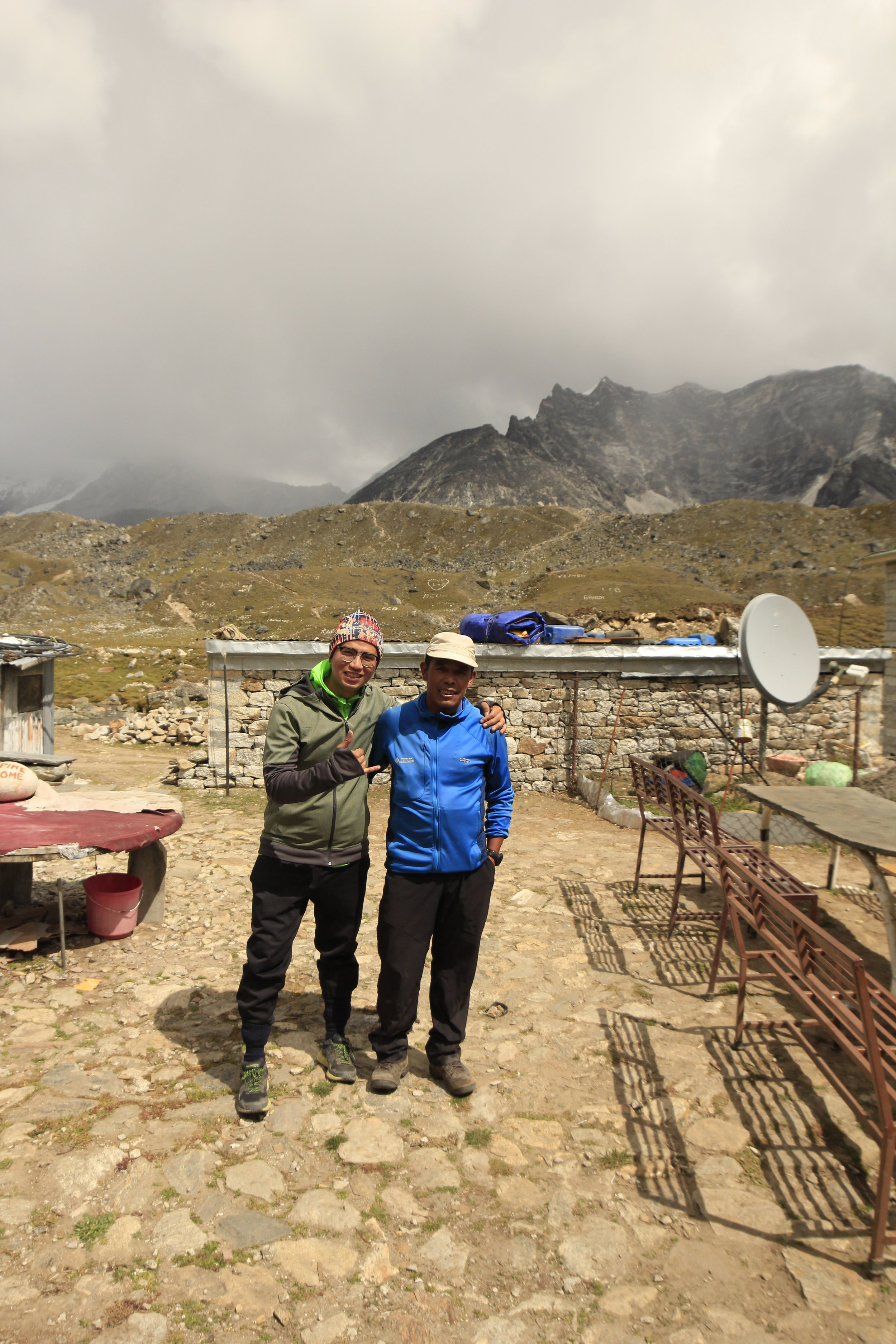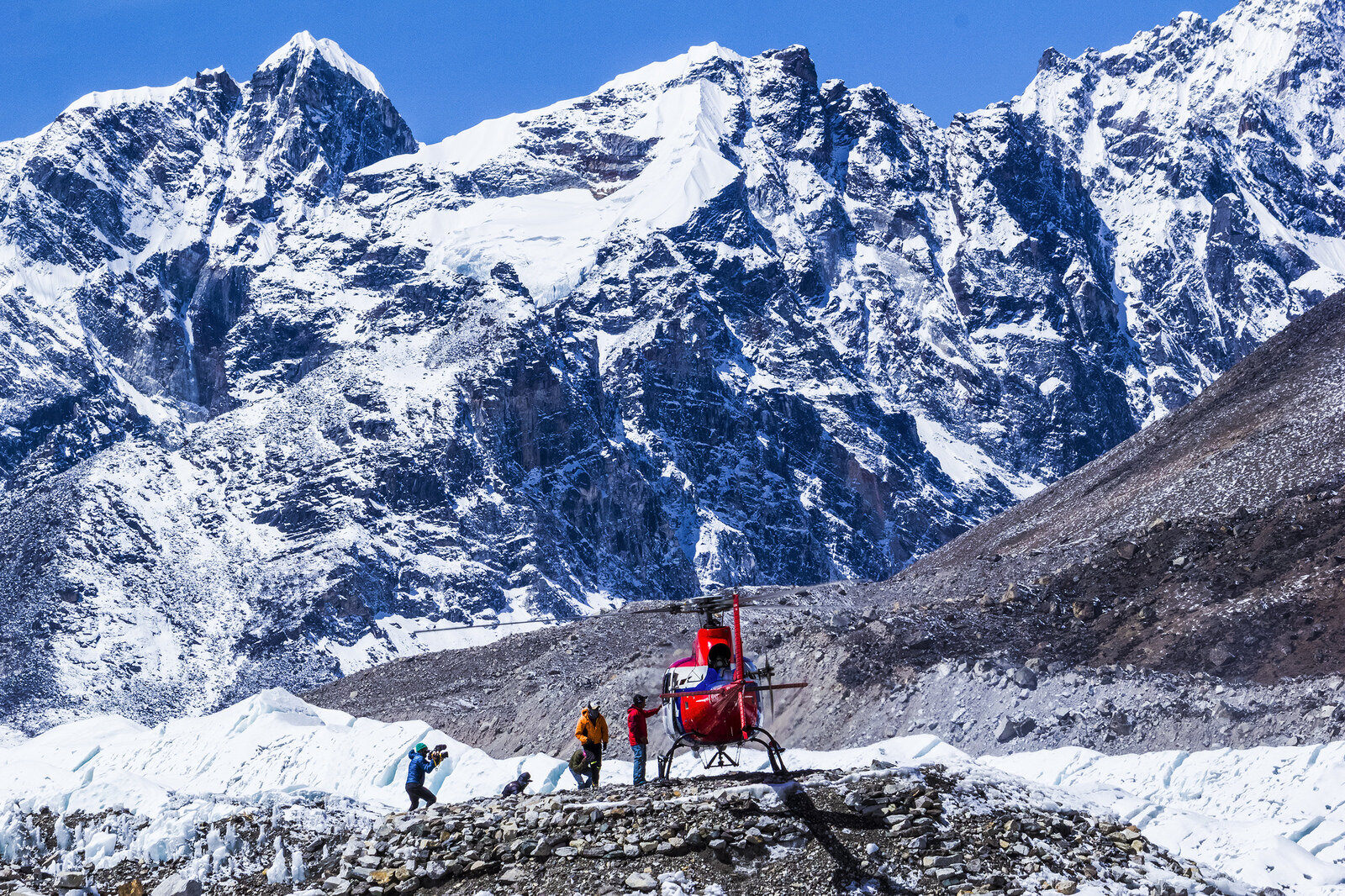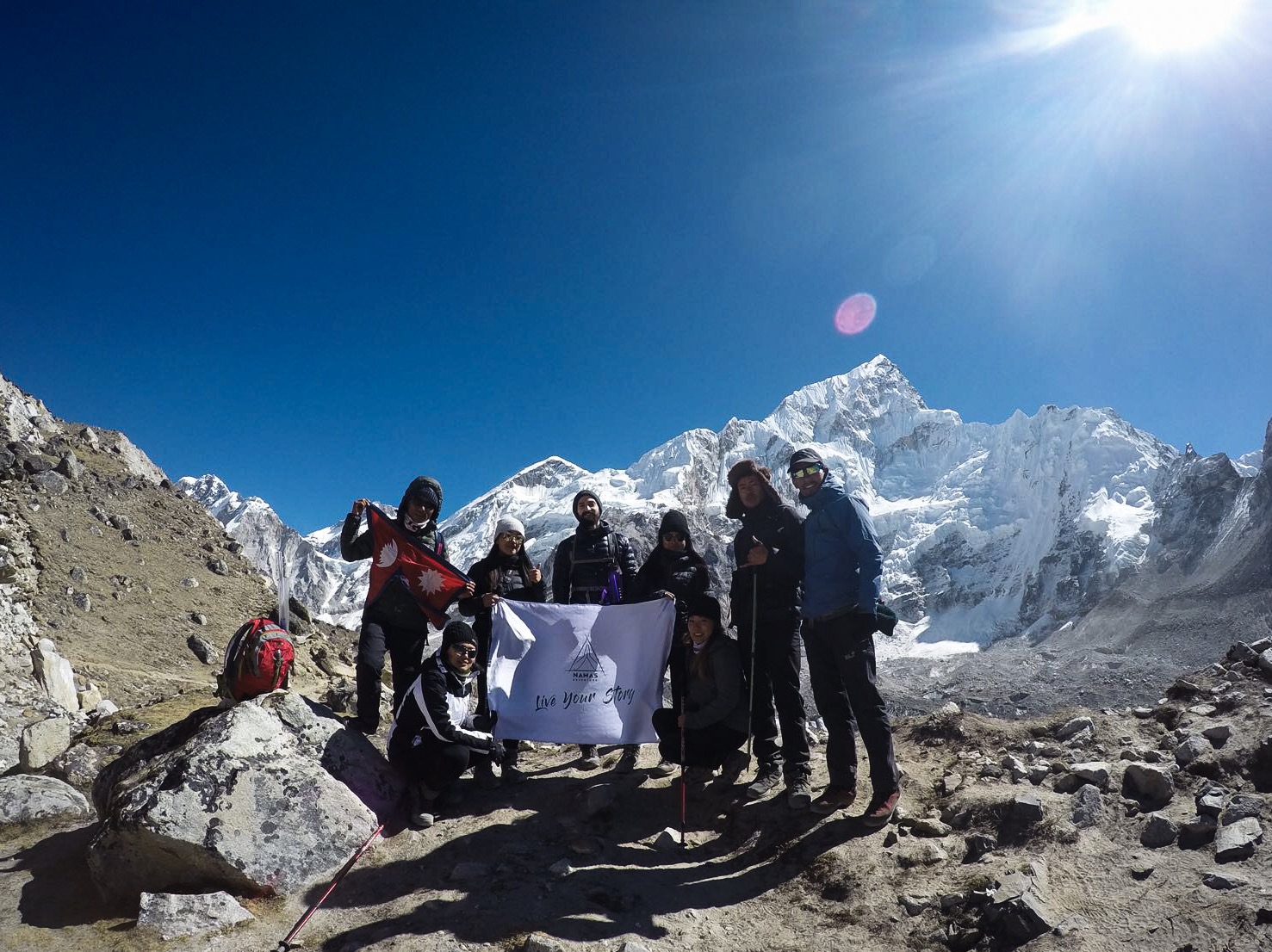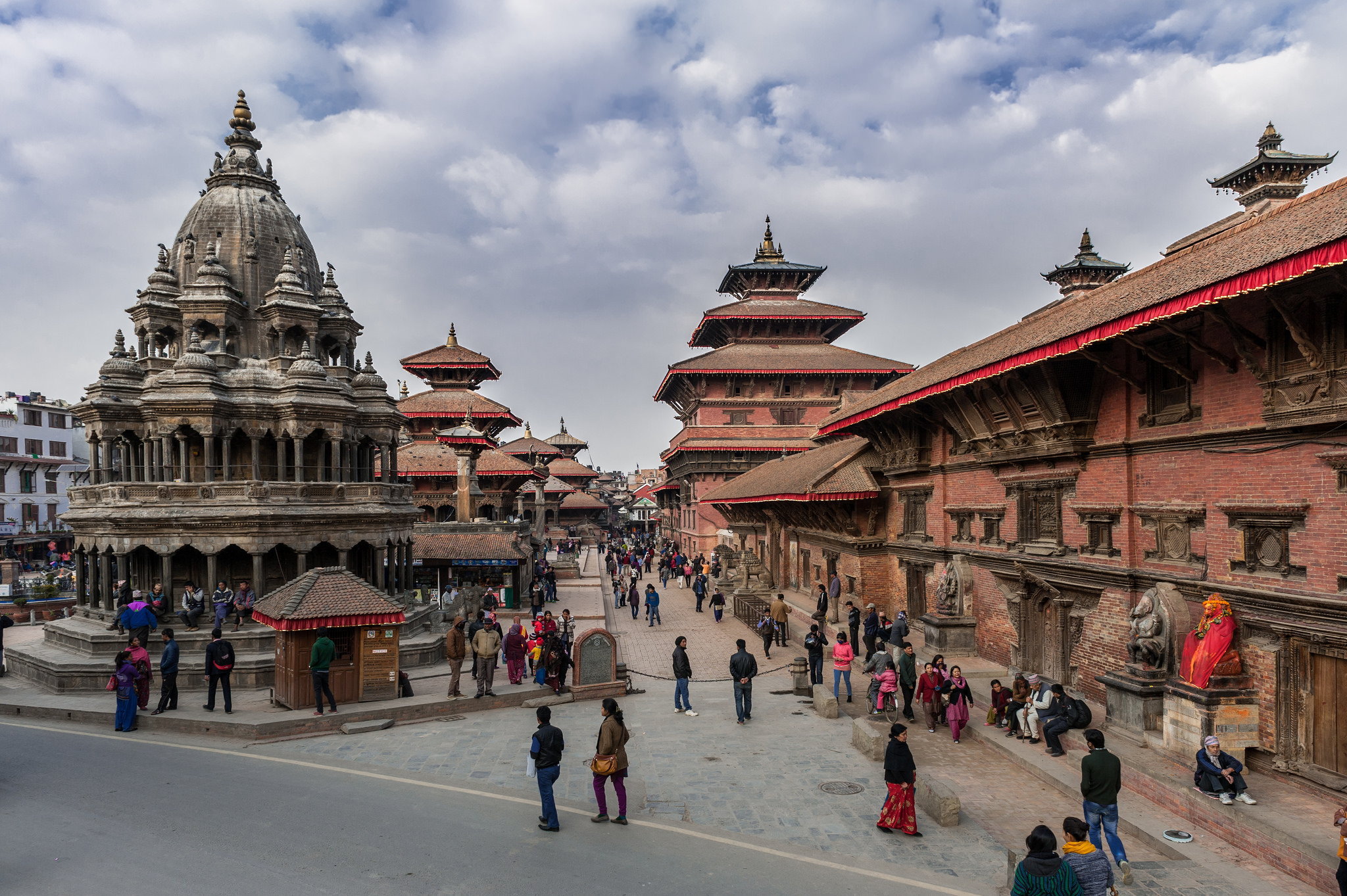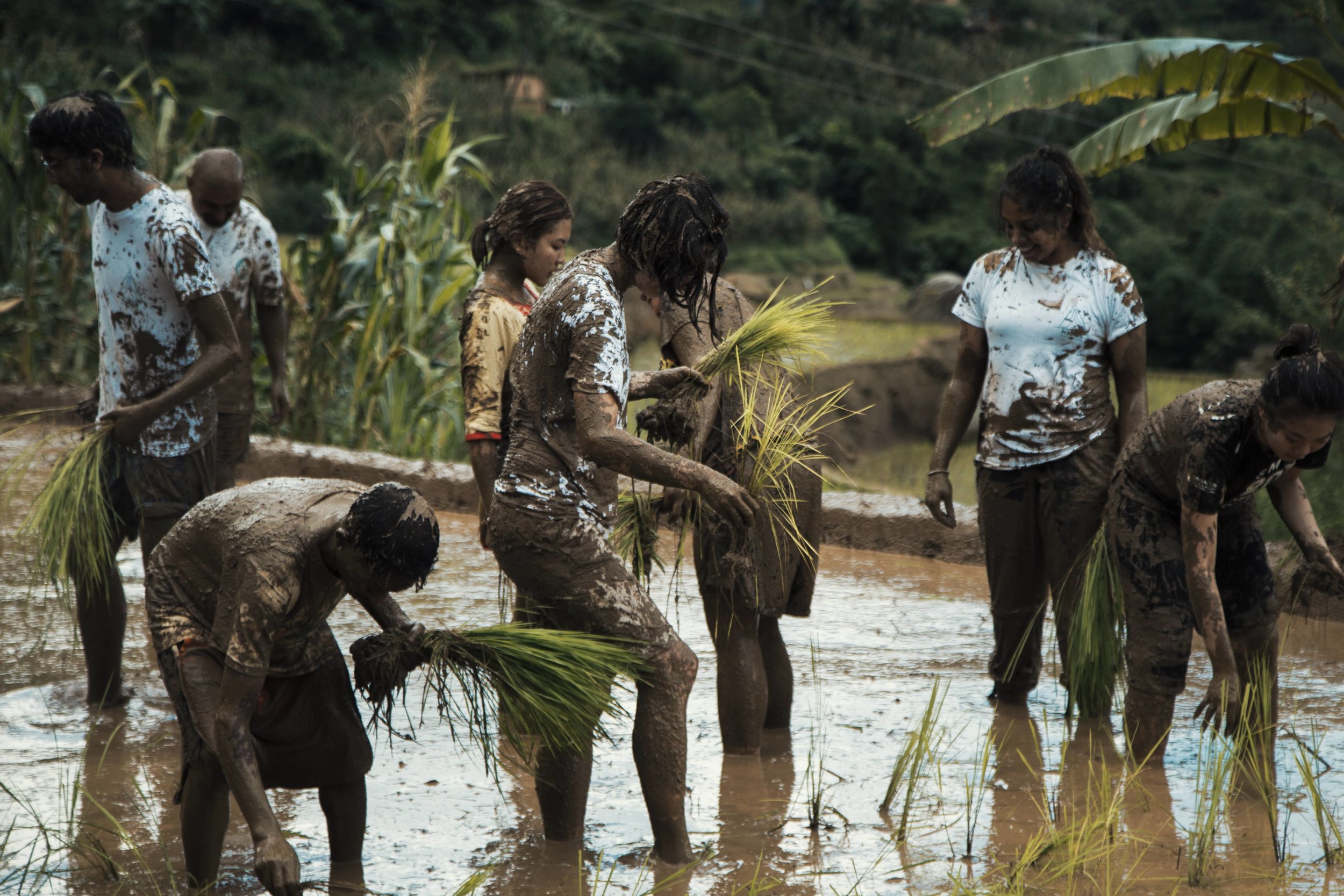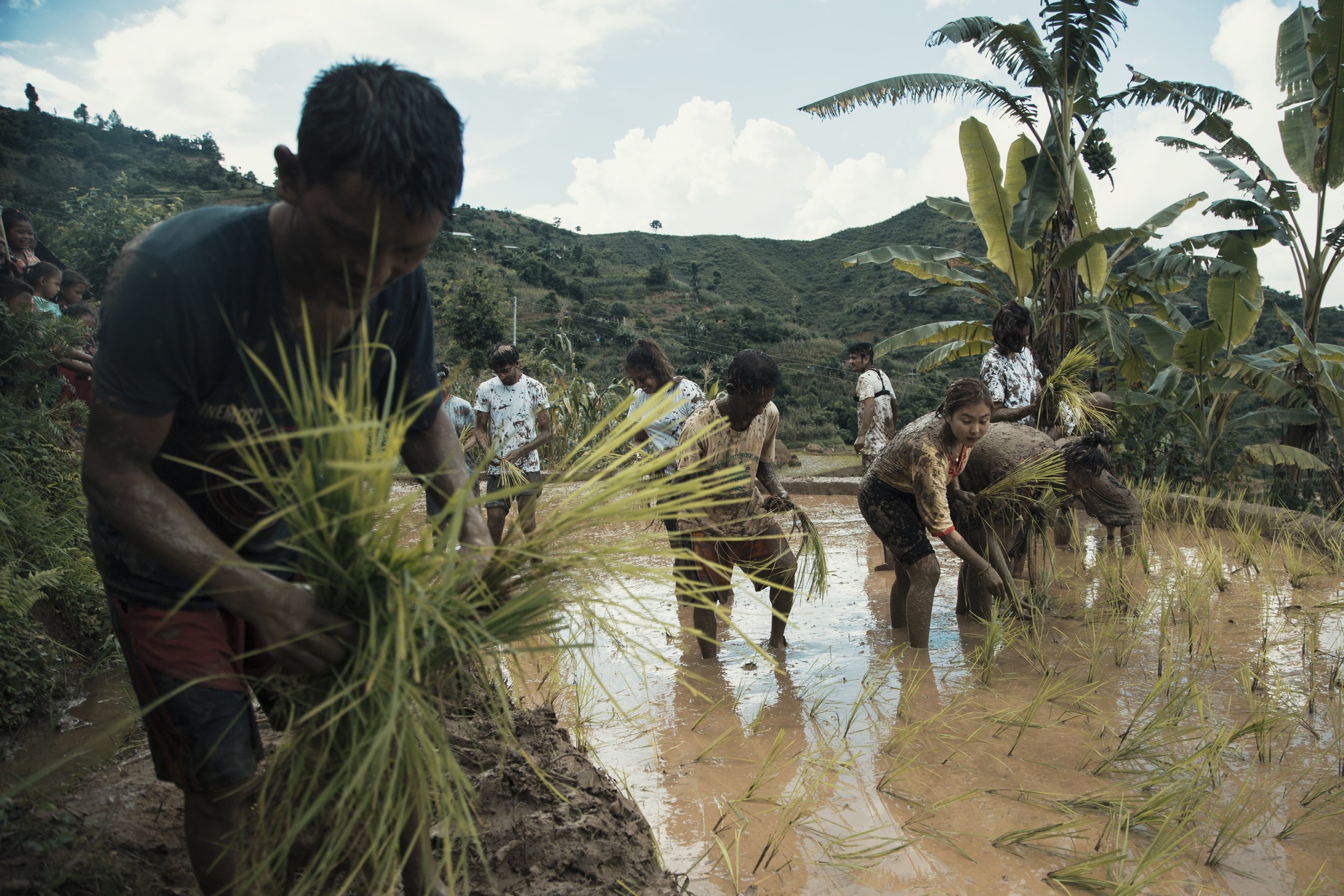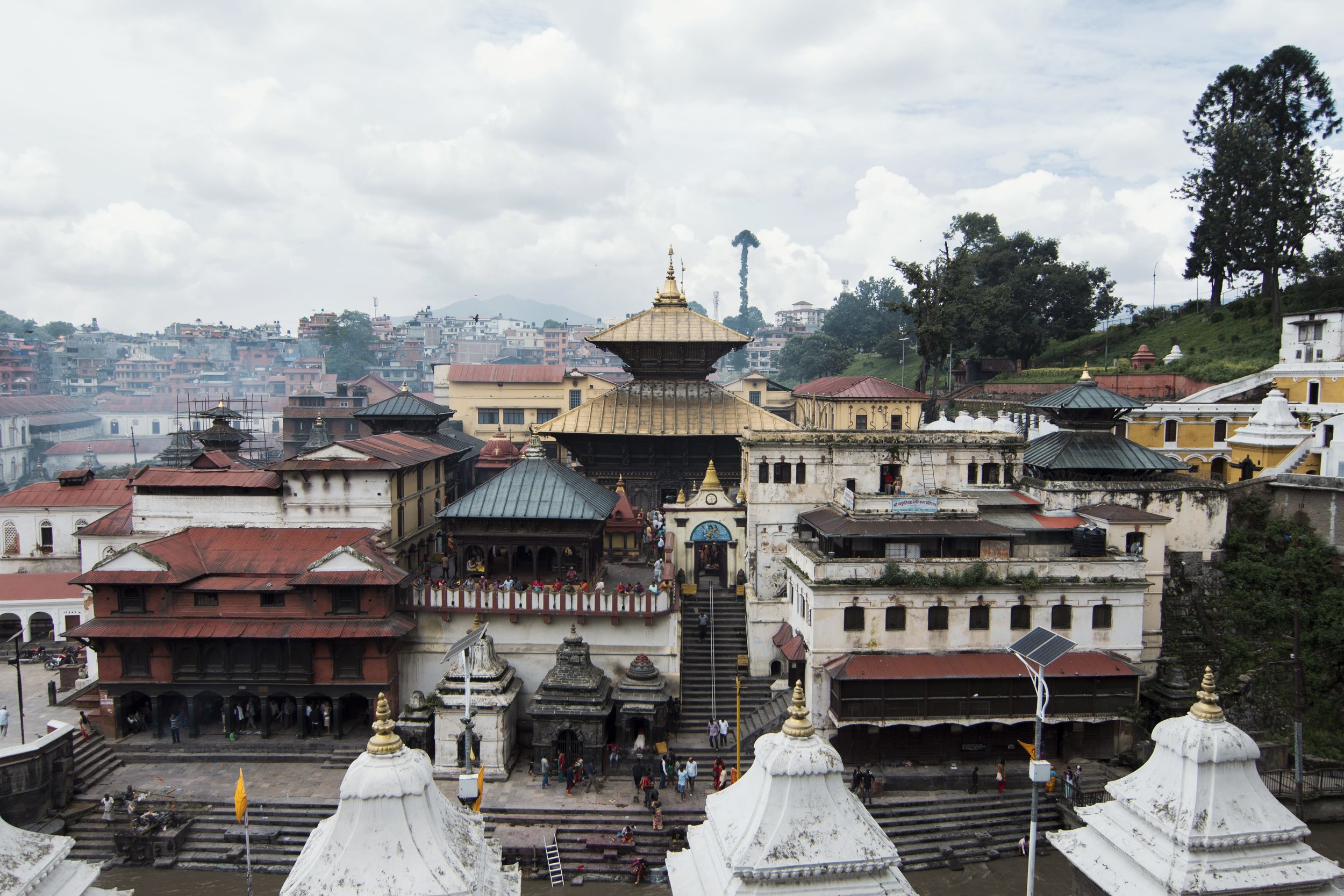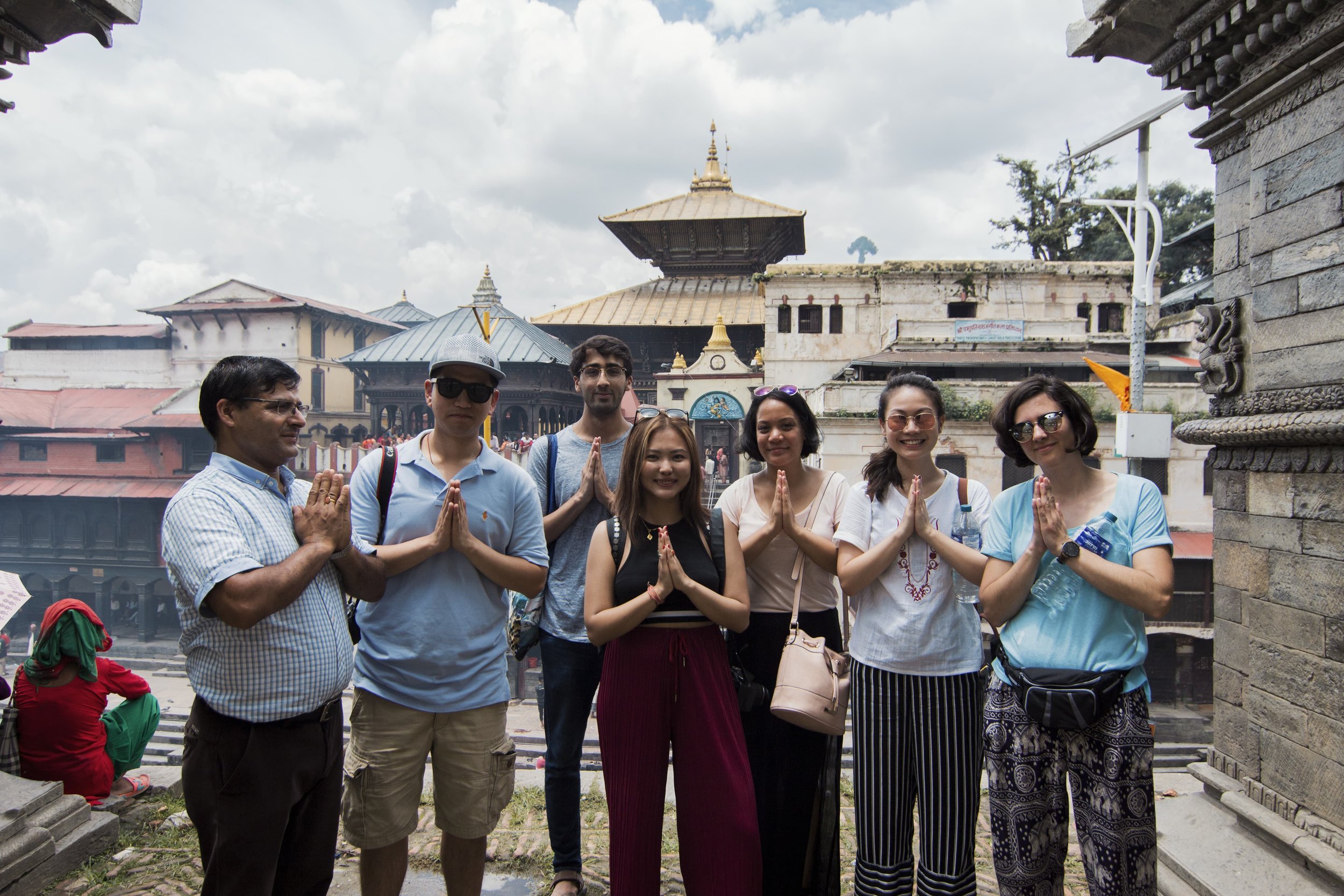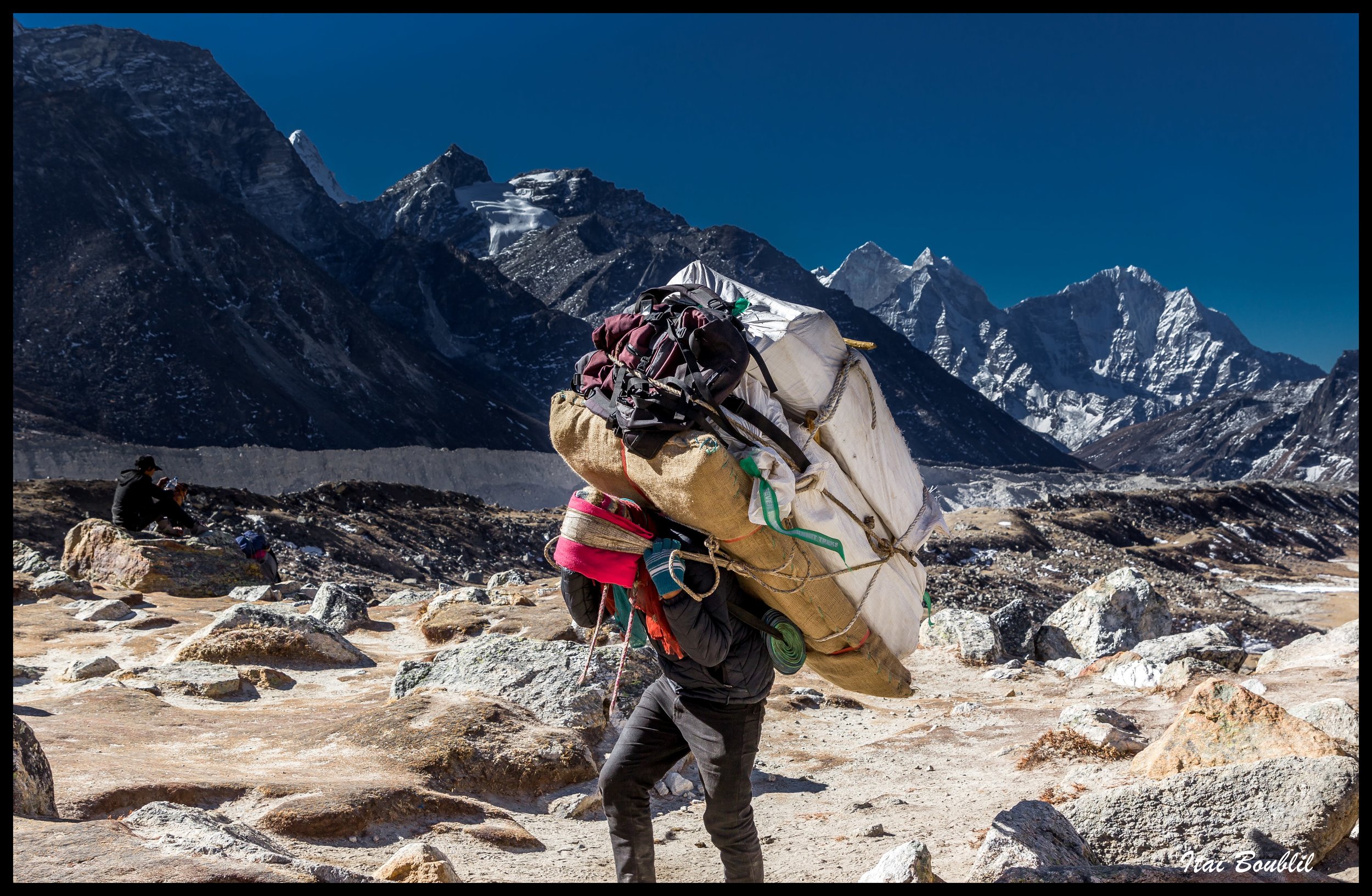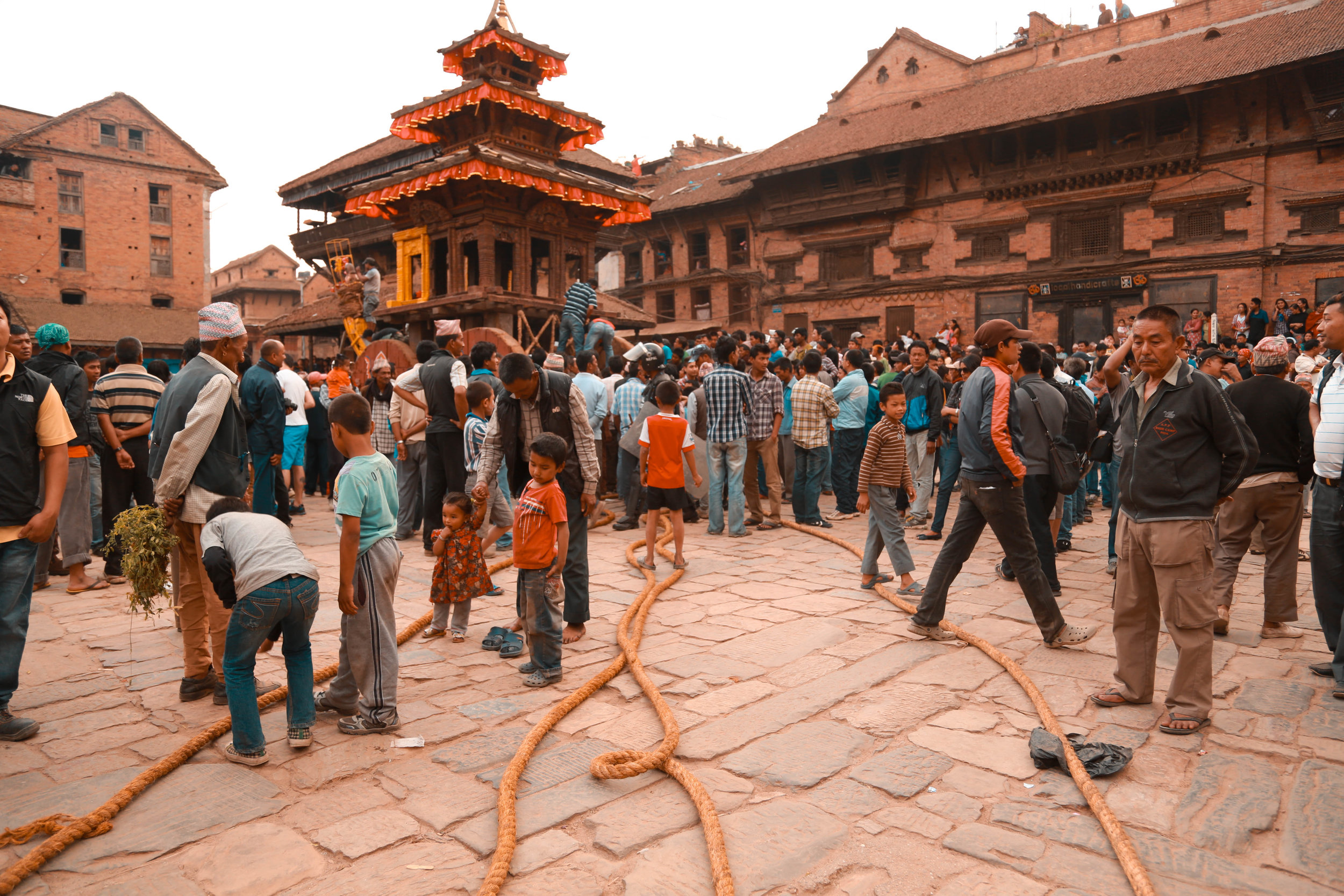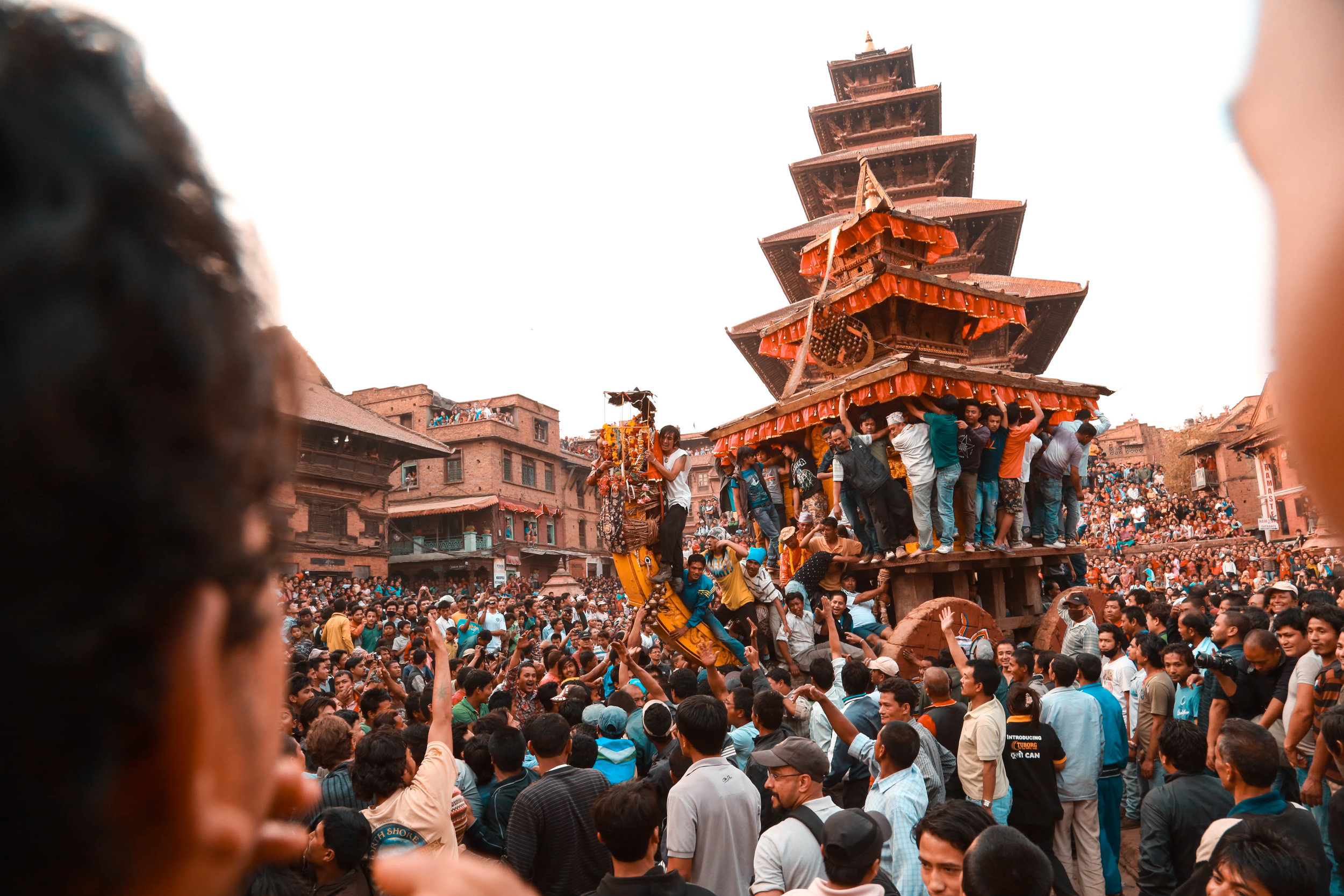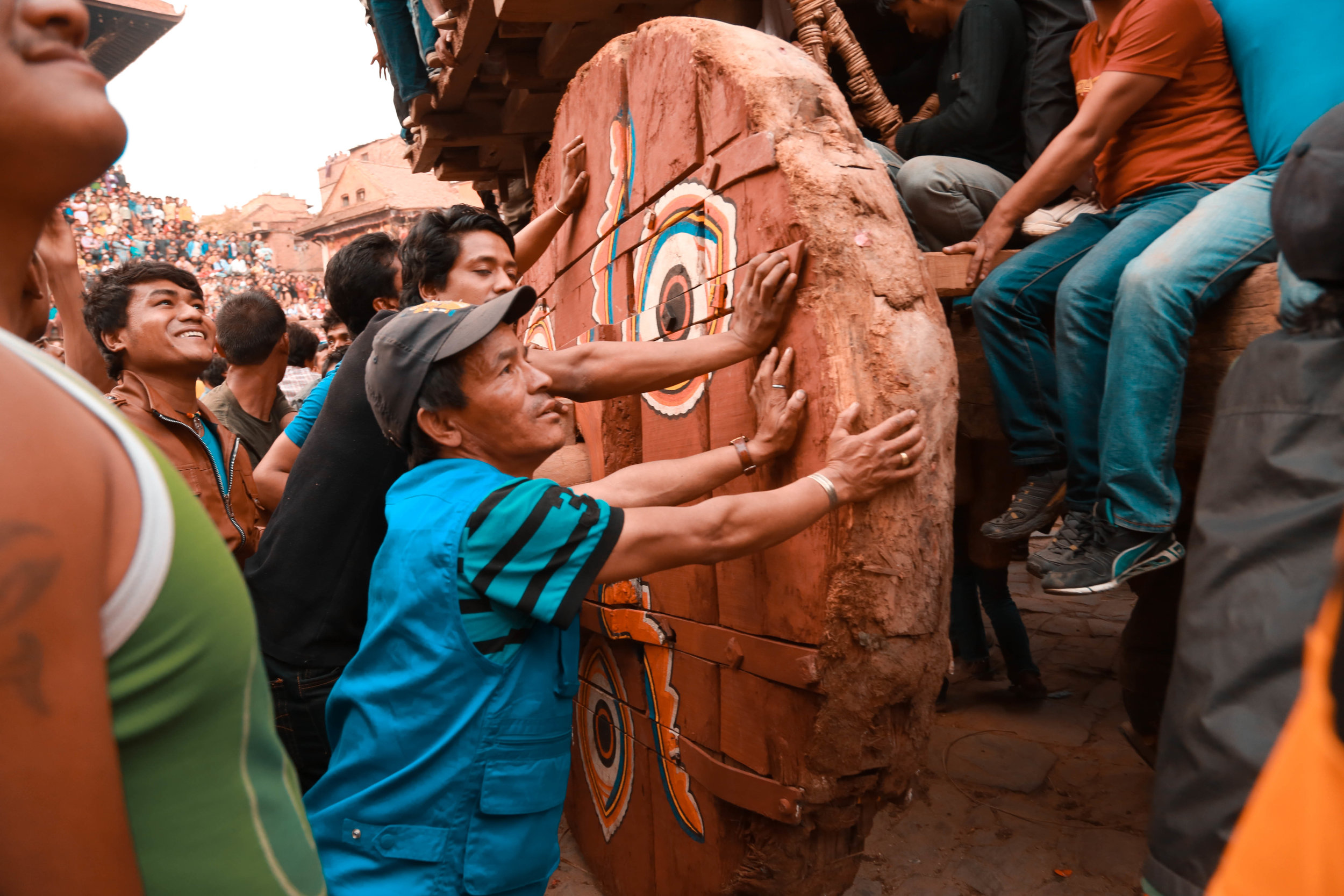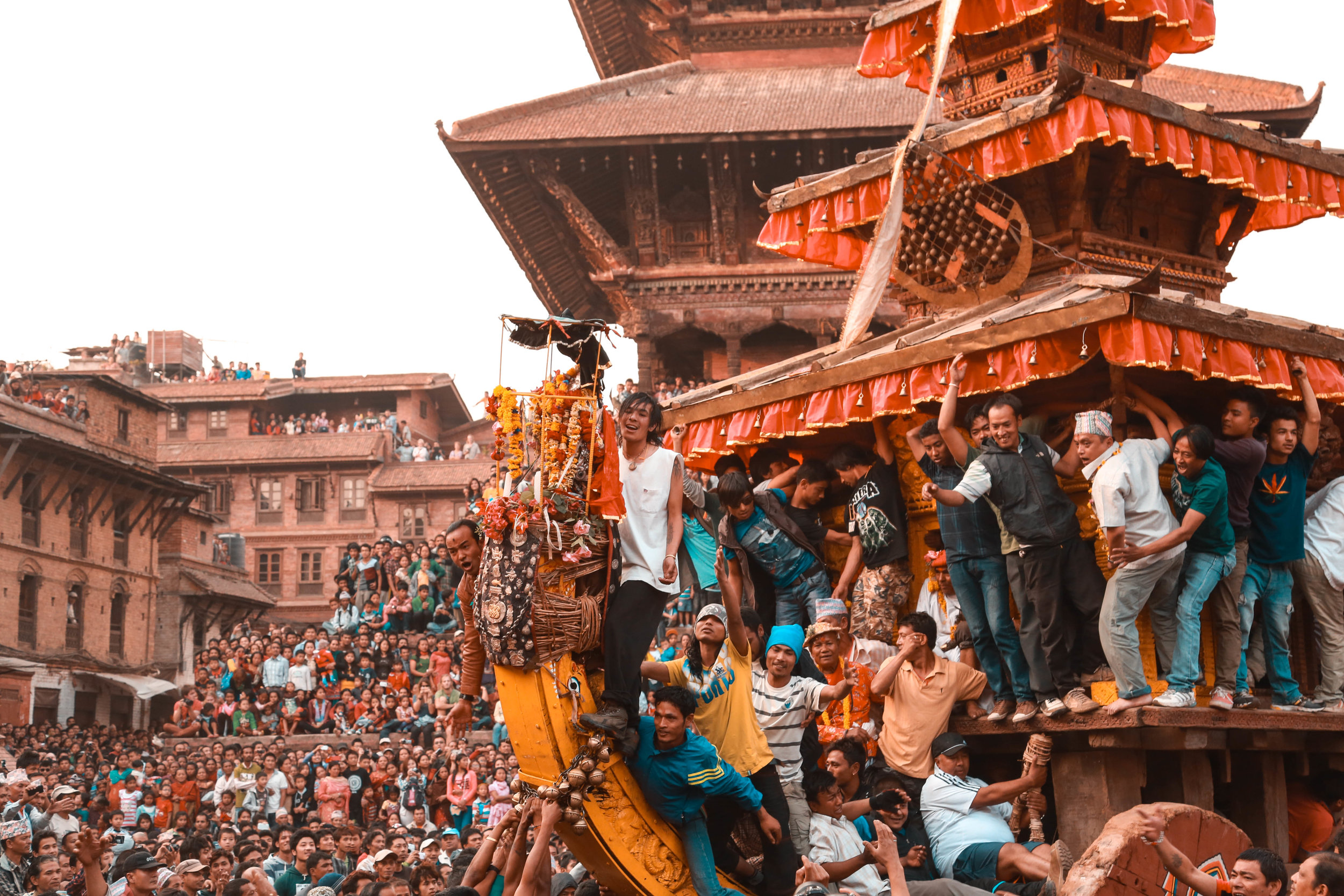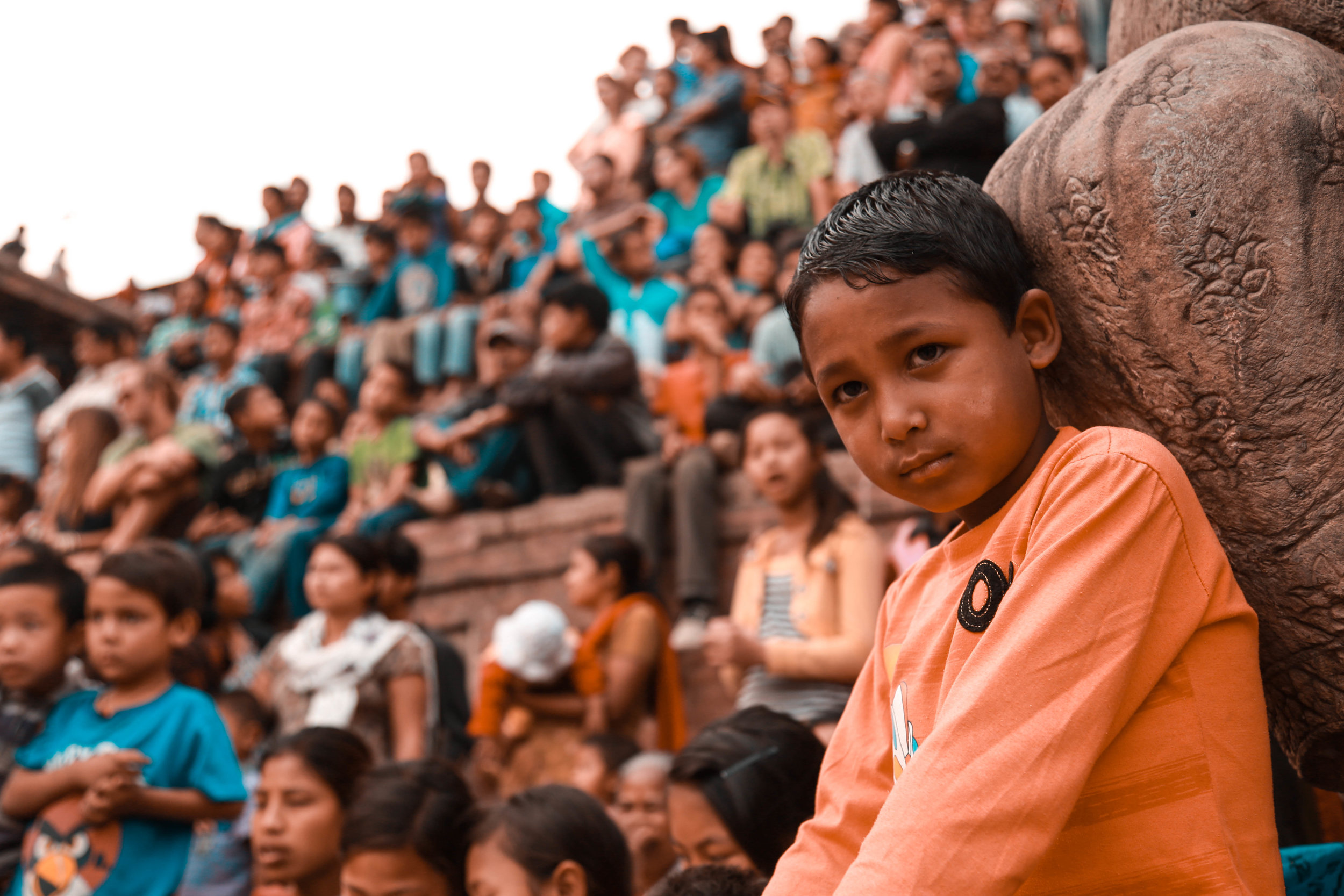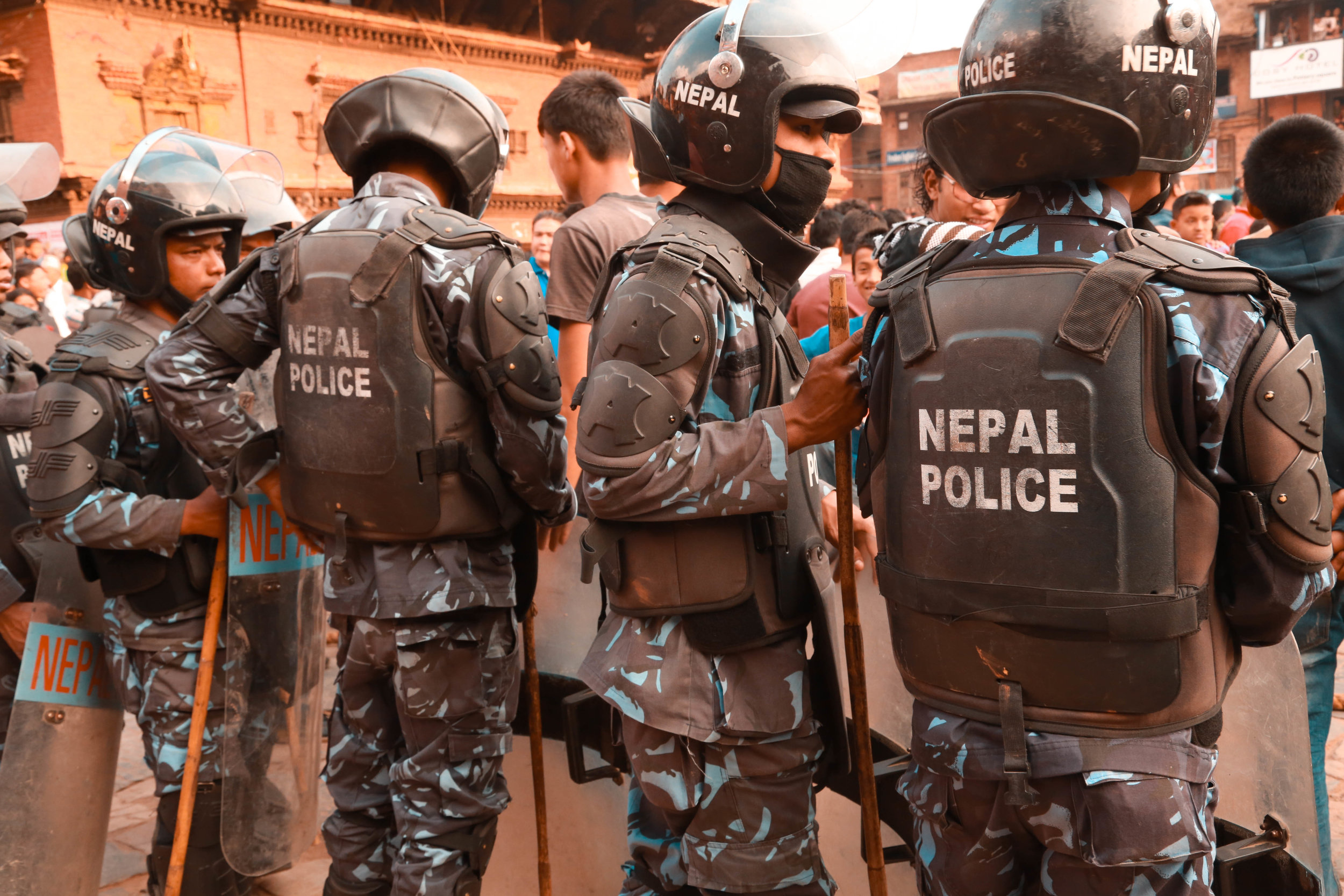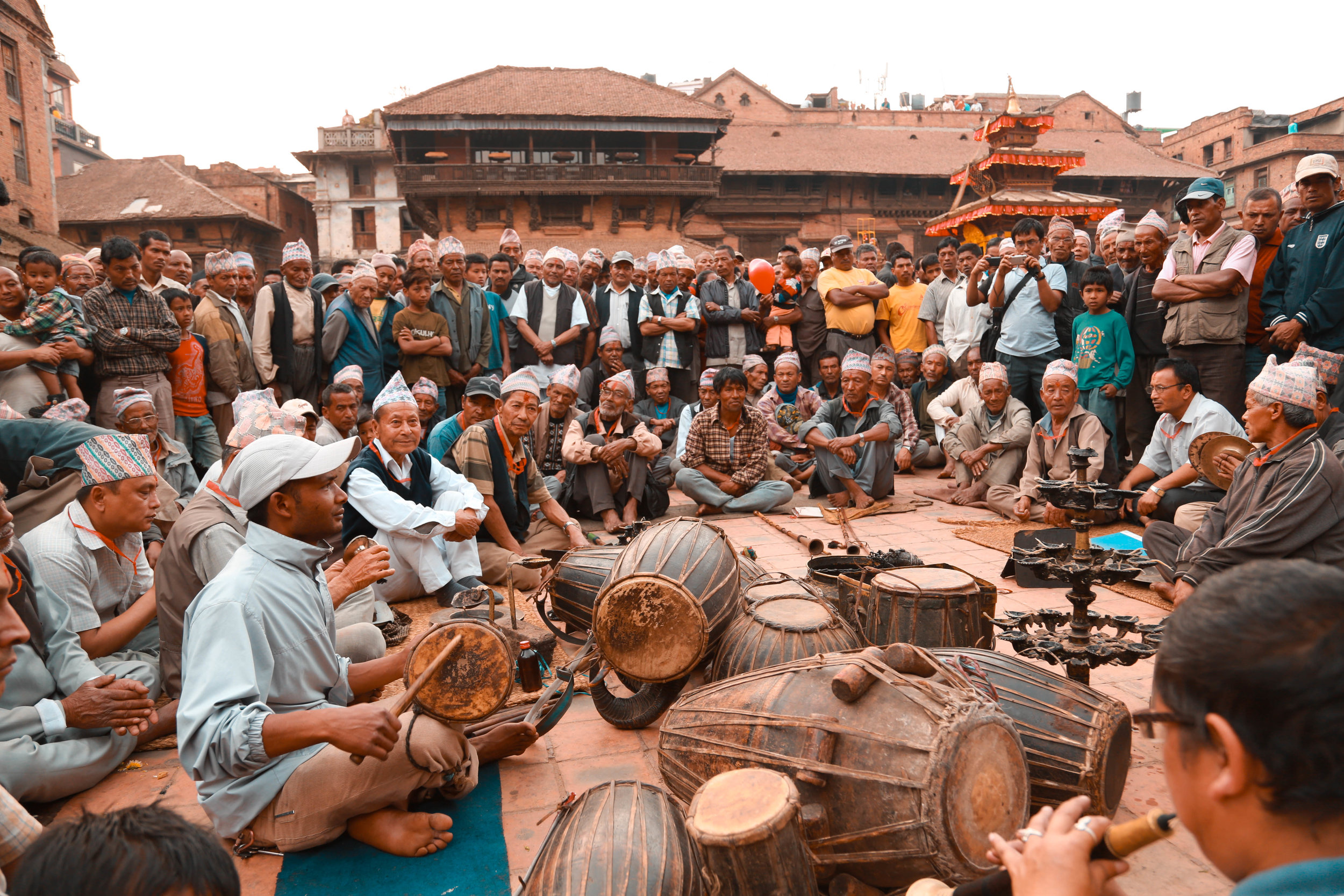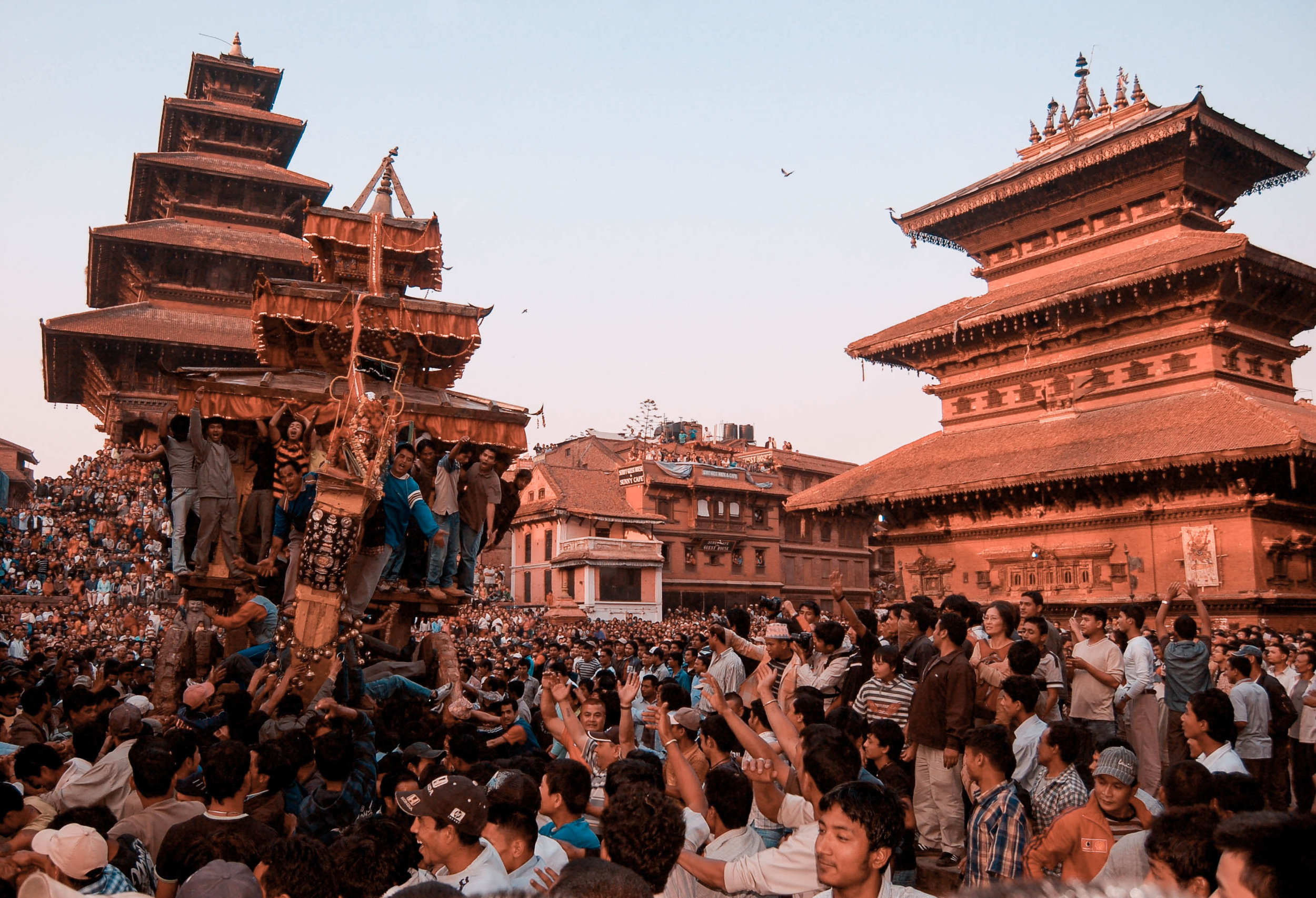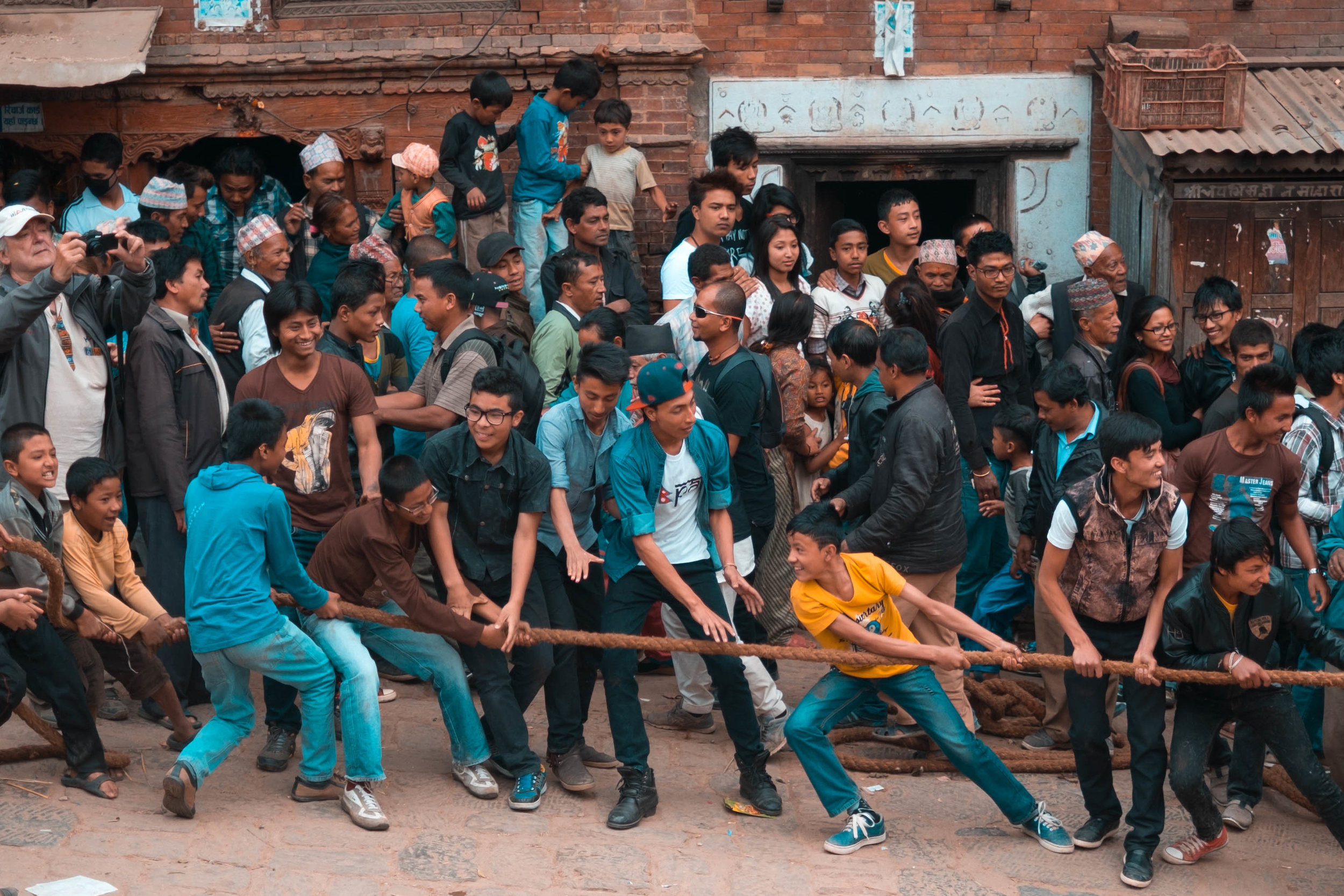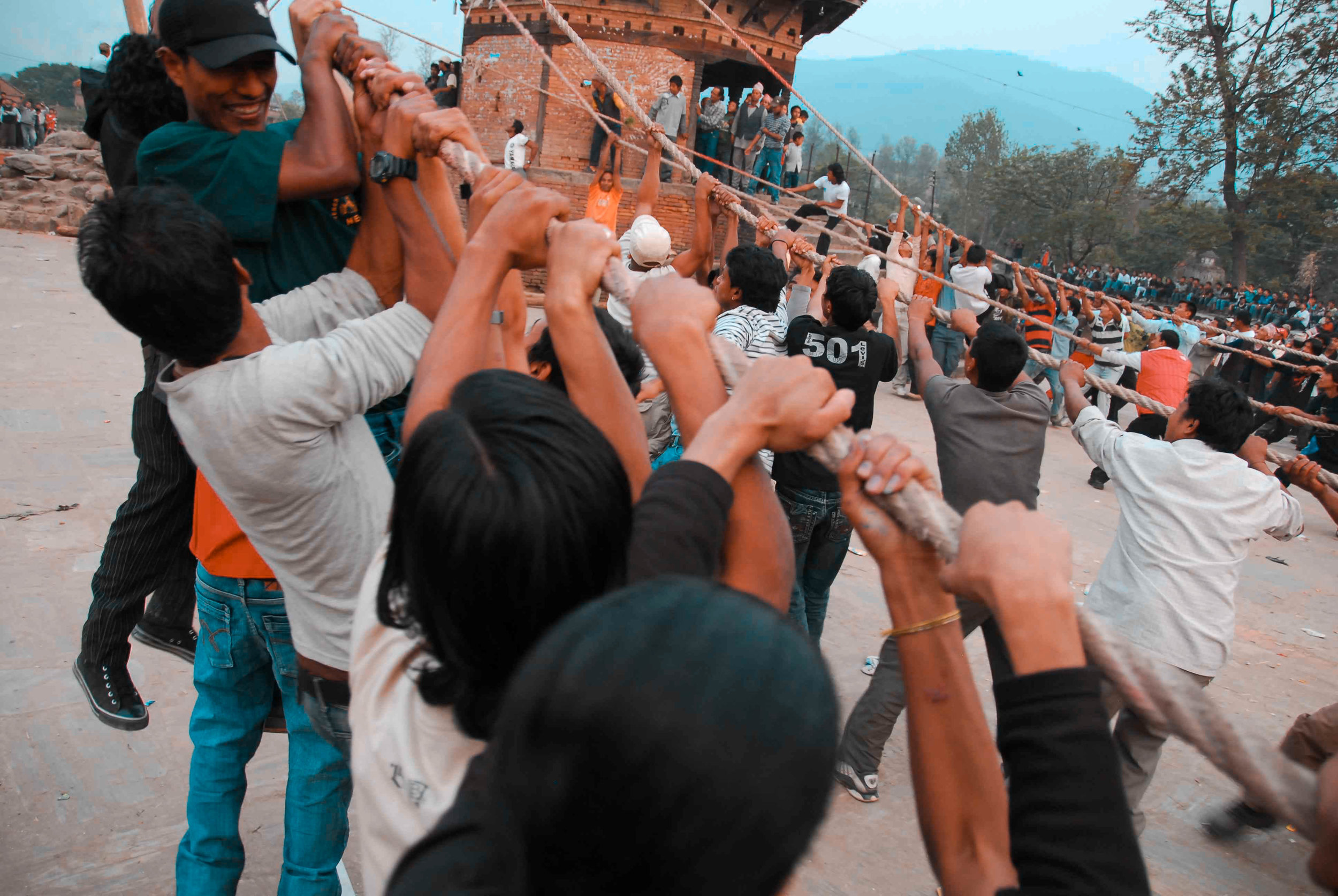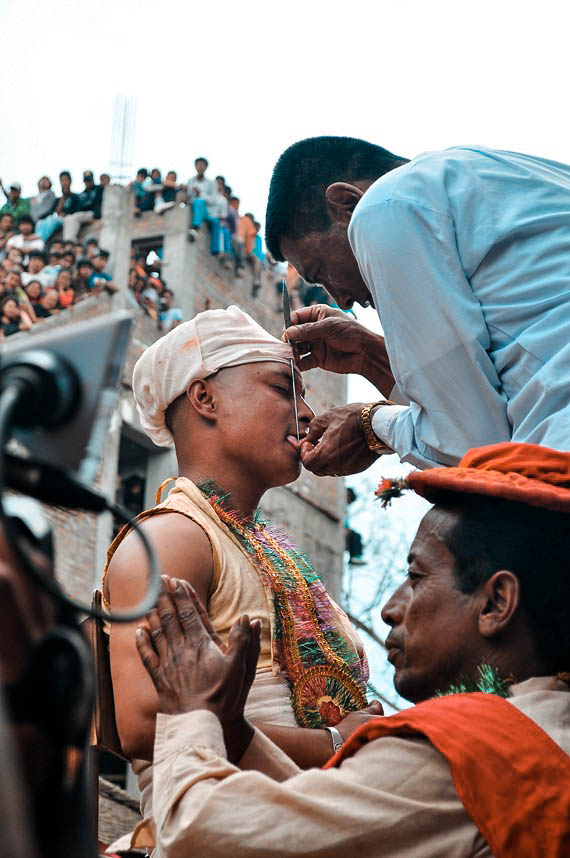Altitude sickness
ALTITUDE SICKNESS
Trekkers in Dhaulagiri Base Camp
As adventure travelers, we naturally have the urge to defy the challenges that we see or want to take head-on so that we can accomplish our sense of adventure. There are also times when your body defies all the expectations, all science and we do have the capacity to prove all the numbers wrong but it is wise to understand the warnings and worst-case scenarios of our daring adventures. Also, another piece of advice is just because you didn't have it on the first run doesn't mean you will not have it on your next high altitude adventure. 'Prevention is better than cure', applies in the mountains.
While trekking or mountaineering adventure you have to be aware of acute mountain sickness going into the high altitude zones. We cannot point out precisely exactly what type of person certainly suffers from this, but the signs and symptoms are there when ascending the great Himalayas peaks, Andes, or any high altitude mountains. In this post, we will cover the science behind it and some of the suggestions that have been developed so far to overcome altitude sickness. In fairness, even mountain climbers who have climbed Everest 10 + times suffer from the symptoms, they are just better at dealing with it. There is no escaping and it is normal to feel its effect but it is very important to follow the precautions and guidelines to be safe, enjoy and complete your adventure.
I met Danuru Sherpa(Senior Mountain Sherpa Leader), who has summited Everest 13+ times. Even he mentioned that headaches are normal in high altitudes. At Lobuche 4940M.
So what is Altitude sickness and its three types?
It is a group of symptoms only experienced when elevating high altitudes too quickly. We say on average people start to feel the effects from 2500M above sea level.
Lukla Airport 2860M. Don’t be surprised or discouraged if you start to feel the altitude (lightness feeling) once you land in Lukla. This will be your very first day when starting your treks or mountain climbing trip in Everest region.
Three types of altitude sickness:
1. Acute mountain sickness (2500 M +) is the mildest form and it’s very common. The symptoms can feel like a hangover-dizziness, headache, muscle aches, nausea.
2. High Altitude Pulmonary Edema (HAPE, 3200 M+) is a buildup of fluid in the lungs that can be very dangerous and even life-threatening.
3. High Altitude Cerebral Edema (HACE 4300 M+) is the most severe form of altitude sickness and happens when there’s fluid in the brain. It’s life-threatening and you need to seek medical attention right away.
Symptoms of Altitude sickness?
Normal signs
Headache
Dizziness
Nausea or Vomiting
tiredness
Shortness of breath
Loss of appetite
Some of the extreme signs that need immediate attention
Face, eyes, and lips color turns dark red to blue
Extreme Stomach ache and constant Vomiting
Loss in consciousness and fainting
Do not panic, when you have any of these signs. Follow the instruction from the guides and remember your body has the capacity to overcome and adapt to the new environment. Also, do not rush on your itineraries, as longer days itinerary are designed to help your body adapt to the high altitudes and we advise our travelers not to skip their acclimatization day. It is usually placed during the rest days to climb up to 300M - 500M high so that your body adapts to the environment. So that your body adapts and develops extra red blood cells in your bloodstream which in turn helps your body and brain to better utilize the oxygen in your body.
Note - It is very important that you have the right insurance (with Repatriation) and Helicopter rescue. Helicopter rescue is very effective in Nepal. You will need to provide all your insurance details (emergency hotline) to your operators so that when needed rescue is sent immediately. Please check our trusted insurance provides page (click here). Although there has been news of scams, reputable companies/operators won’t risk this, cheap tour prices are one of the main indicators.
Himalayas, Nepal. (Ama Dablam in centre)
Prevention and treatments.
Mountains as beautiful and magnificent they are, comes with hostility and challenges which we are not used to in our daily lives. We have laid down some preventions to overcome them.
Avoid flying directly to areas above 3000M high
Avoid alcohol and heavy smoking
Drink enough water. (3l - 4l) per day.
Do not overstress your body and avoid heavy exercise.
Walk at a mild comfortable pace. ( It is not a race, you want to overcome the challenge but understanding your body and mind is important, do not let your ego take over)
Acclimatization day is important, Stop and rest when you can.
Energy or Chocolate bars are helpful
Every night before sleep, drink hot tea or water. Jasmine tea is our favorite.
If you fall sick allow your body to fall sick and get some rest, there’s natural ease when you allow your body to accept what you are feeling instead of fighting it.
Treatments
Drop altitude immediately, we recommend anywhere from 500M - 1000M.
Take bottled oxygen (Normally for mountaineering or in an extreme case)
Take medication (all our guides will be carrying first aid kits )
Control your breathing and be mindfully aware of your heartbeat.
Finally, it would also be wise to follow local ways to dealing with altitude sickness. We can share few local tips
Garlic soups are the best while trekking the Himalayas. Garlic’s natural properties assist in thinning your blood which helps for better circulation.
If you can take a spicy taste, potato wedges with spicy Nepalese chutney (local ingredient) help with headache
Try to avoid sleeping during day, try and resist the pain and sip warm Jasmine tea or water.
Dal Bhat power 24 hours, it rhymes but definitely has its benefits. The carbs give you the strength and energy needed to ascend the hills of Nepal.
And lastly, check the level of oxygen in your body when you stop for the night. All our local guides will be carrying one set of fingertip oxygen level checkers to make sure your body has the right amount of oxygen needed. Based on that and their experience, they will advise you on how to recover and give their extra needed attention for your care.
Oxygen level chart ( click here )
Note - It is very important that you have the right insurance (with Repatriation) and Helicopter rescue. Helicopter rescue is very effective in Nepal. You will need to provide all your insurance details (emergency hotline) to your operators so that when needed rescue is sent immediately. Please check our trusted insurance provides page (click here). Although there has been news of scams, reputable companies/operators won’t risk this, cheap tour prices are one of the main indicators.
Get set on your adventure into these challenging areas, be safe. Defy the odds but equally, be aware of what could go wrong equally. Happy and healthy adventures.
Live your story.
Nepal under £1000 | $1500
Pic - Benjamin / everest region
Planning your Nepal adventurers this 2018 and you are wondering what can you do under £1000 in the culturally rich mountainous country? We narrow our all-inclusive and activity tours that can be done under your £1K ( $1450 or €1150 ) budget and it is not just the one type of adventure (i.e. trekking ). Nepal does not compromise the essence of adventure whether you are there for 1 week or plus. Below are some adventures listed.
Everest Base Camp (5380 M)
Price £990, 14 days
Yes it's true, Everest base camp the most well known can be experienced just at £990. When ever travelers think of Nepal, Everest base camp is the first thing which comes the mind. No, you are not climbing the mountain but rather just reaching the base camp, which is at 5380 M ( 17,600 ft) high. Yes, the most famous bucket list adventure is just got more afforadble!
We have set departures to Everest base camp, ( click here ) more infos.
Annapurna Base Camp (4310 M),
Price £720, 12 Days
The most famous trek after Everest base camp. This trek is vastly different from Everest region considering the landscapes, culture, heritage and the Himalayas. Annapurna is one of the most varied trek in Nepal from arid-desert land to hot springs. Travelers go through the villages which are mostly resided by the Gurung tribes, compared to Everest region which is mostly occupied by Sherpa tribes of Nepal.
We have set departures to Annapurna base camp, ( click here ) more infos.
Mardi Himal trekking (4500 M),
Price £750, 11 Days
Mardi Himal is one for the adventurers who seeks something new. This trek site is slowly gaining attention from adventure seekers. If you are one looking for off the beaten trek route, this is be your option until it gets will surely get the massive influx of adventurers.
To enquire about Mardi Himal trek please email us at namas@namasadventure.com ( Minimum 2 bookings required)
Poonhill trekking (3210 M)
Price £650, 8 Days
Poonhill is considered the most luxurious trekking site of Nepal. It is the shortest and quickest trek sites which takes adventurers closest to the Western Himalayas of Nepal. One highlight is the 3000 steps from Tirkhedhunga to Ulleri, and of course the final day Poonhill itself for panoramic view of western Himalayas of Nepal.
To inquire about Poonhill trek please email us at namas@namasadventure.com (Minimum 2 bookings required)
Motocross Adventure, Hills of Kathmandu.
Price £ 999, 6 Days
This one is for the riders and frankly it is also a unique introduction to the biking terrains of Nepalese hills. Motocross adventure itineraries are considered amongst the most extreme in Nepal. Nagarkot and Shivapuri still gives you the thrill of dirt bike adventure, which we recommend for beginners to moderate experienced riders. While a fairly new development for tourist adventurers, Nepalese people tend to always explore as bike riders rather than 4 wheel drivers.
To inquire about Motocross Adventure, please email us at namas@namasadventure.com (Minimum 5 bookings required)
Mountain Biking Nagarkot,
Price £ 145, 2 Days 1 Night
This Nagorkot tour is for the adventurers interested in culture, sightseeing and mountain views but also enjoy their cycling. Nagarkot is famous for is wide-ranging views of the Himalaya from Annapurna in the west to Everest it the east. From Kathmandu you ride along the flat river valley behind Thimi, through a series of back alleys and walking tracks. Once in the ancient town of Sankhu, we climb up from around 13 km on a mix of dirt road and jeep road to Nagarkot.
We have set departures to Nagarkot MTB everyday, (click here) more infos. Minimum of 2 bookings required.
Yoga Rafting
Price £ 950 | 11 Days
Yoga rafting is a new concept and the customer satisfaction has been overwhelming. Nepal being a very spiritual country, Yoga is an activity that has been integrated into trekking and now in rafting activities. Your day starts with an early sunrise yoga session that warms up the body and prepares us for a day of paddling on the beautiful river, whilst immersed in the most beautiful scenery. Practicing sun salutations with the rays of the Himalayan sun on your face will awaken your body as well as your spirit. This rafting trip is at grade II river and is beginner-friendly. This trip focuses on your body, mind and soul's health, wellbeing and awakening.
This is an exclusive tour and our teams only runs it few times in a year. For more information about the trip ( click here ) .
Rafting, Canyoning and Kayaking
Price £ 250, 3 Days
Nepal is considered to be one of the largest source in fresh water relative to the land mass base. You can guess where the waters mostly come from, of course the great Himalayas! The condition is perfect for river based adventures. Rafting and Kayaking in the rivers of Nepal has always been there, but hasn't gained its fair share of attention amongst adventurers as trekking. Maybe we are pushing it but this one is for the adventure thrill seekers.
We have set departures for Rafting, Canyoning and Kayaking everyday, (click here) more infos. Minimum of 2 bookings required.
Bungee jump, Canyoning or rafting
Price £ 210, 2 Days 1 Night
Consider the hills and the hanging bridges of Nepal and its height. All in all, Nepal has the perfect condition for the crazy adventure seekers. Currently there are only 2 bungee sites in Nepal with Last Resort being the 2nd highest in the world. This one is for the one who dares and seeks the thrill of height and jumps. Maybe it is never too late to give it a try.
To inquire about bungee, canyoning or rafting, please email us at namas@namasadventure.com . Minimum of 2 bookings required .
Ready to adventure travel Nepal this year !? Our team is here to answer all your adventure calls, lets talk adventure.
Written by - Bisesh Gurung (Founder)
Summer Adventures in Nepal
Photo by Jamie McGuinness of Phoksundo lake Dolpo.
As most of the world gears up for the June - July summer holidays, and as a traveler, if Nepal is on your travel list during these months then we have a handful of recommendations. Monsoon season usually starts from mid June/July ending during the last week of August. during these months it will rain heavily but luckily not every day. Nevetheless, there is something magical in the air at this time and the most pristine and less traveled trek sites open and accessible during monsoon season. Adventure all around Nepal resumes from September.
So, where can I go in Nepal during June - August?
Below are some of the amazing trek sites you can access during your summer holiday. ( Note * - for trekking adventures please have additional days as contingency plan on your itineraries, as travel disruptions are likely to happen with local transportation due to chances of landslides in highway connecting routes).
Trekking adventures
The best part about trekking during June - August is the small number of crowds (to no crowd) in all trekking sites. Trekking can be done in the region where it falls in the Himalayan rain shadow, meaning there is no rainfall in these areas of Nepal.
Upper-Mustang ( 17 Days )
Months during summer ( Monsoon in Nepal ) recommended: Early June and Mid August
The Upper Mustang trek brings you into the hidden world of the old Buddhist kingdom of Mustang, also called Lo. Lo used to be part of the Tibetan empire and is therefore closely tied to Tibet in culture, language and geography. The region's isolation from the outside world has contributed to a highly preserved Tibetan culture and unspoiled nature. Mustang lies in the rain shadow of the Dhaulagiri massif creating a ruggedly arid land surrounded by rocks in all kind of colours and impressive formations. This barren landscape is dotted with settlements of whitewashed houses, barley fields and chortens festooned with prayer flags which add a splash of colour to the landscape.
The trail follows the ancient salt caravan route through which the people of Mustang traded Tibetan salt for grain from the lowlands. The goal of the Upper Mustang trek is the capital of Upper Mustang, Lo Manthang. From the pass Lo La (3950 m) you can see the walled medieval capital in the distance, the white-washed 6-meter tall wall sticking out in sharp contrast to the barren landscape. Upper Mustang is one of the driest region in Nepal and this is the only time of the year where the floras and faunas bloom which occurs due to light rain sprinkles brought by the escaped monsoon clouds from the Himalayas.
If you would like to travel to Upper Mustang region, we have fixed departure dates announced. ( Click here ) for detailed trekking adventure information.
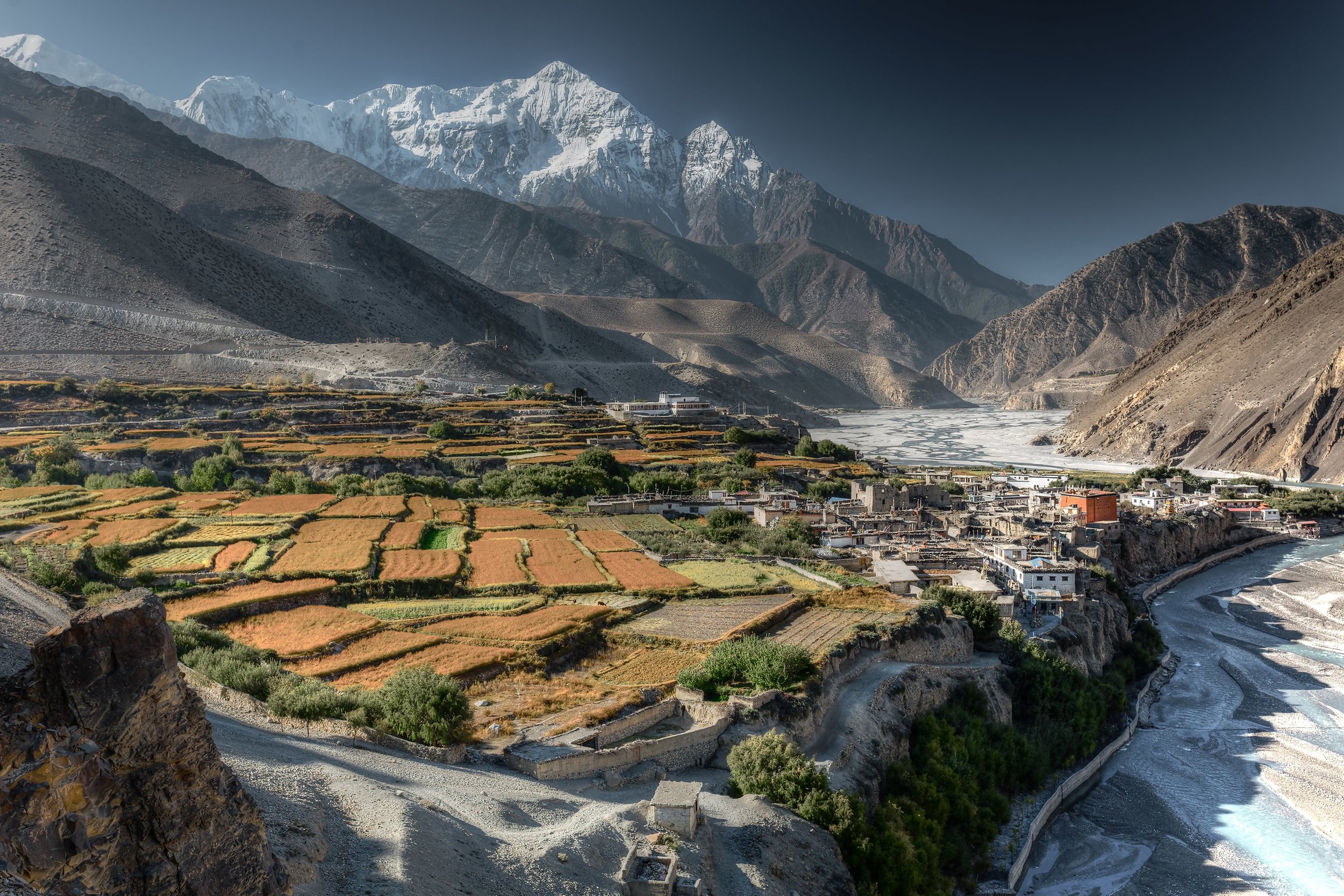
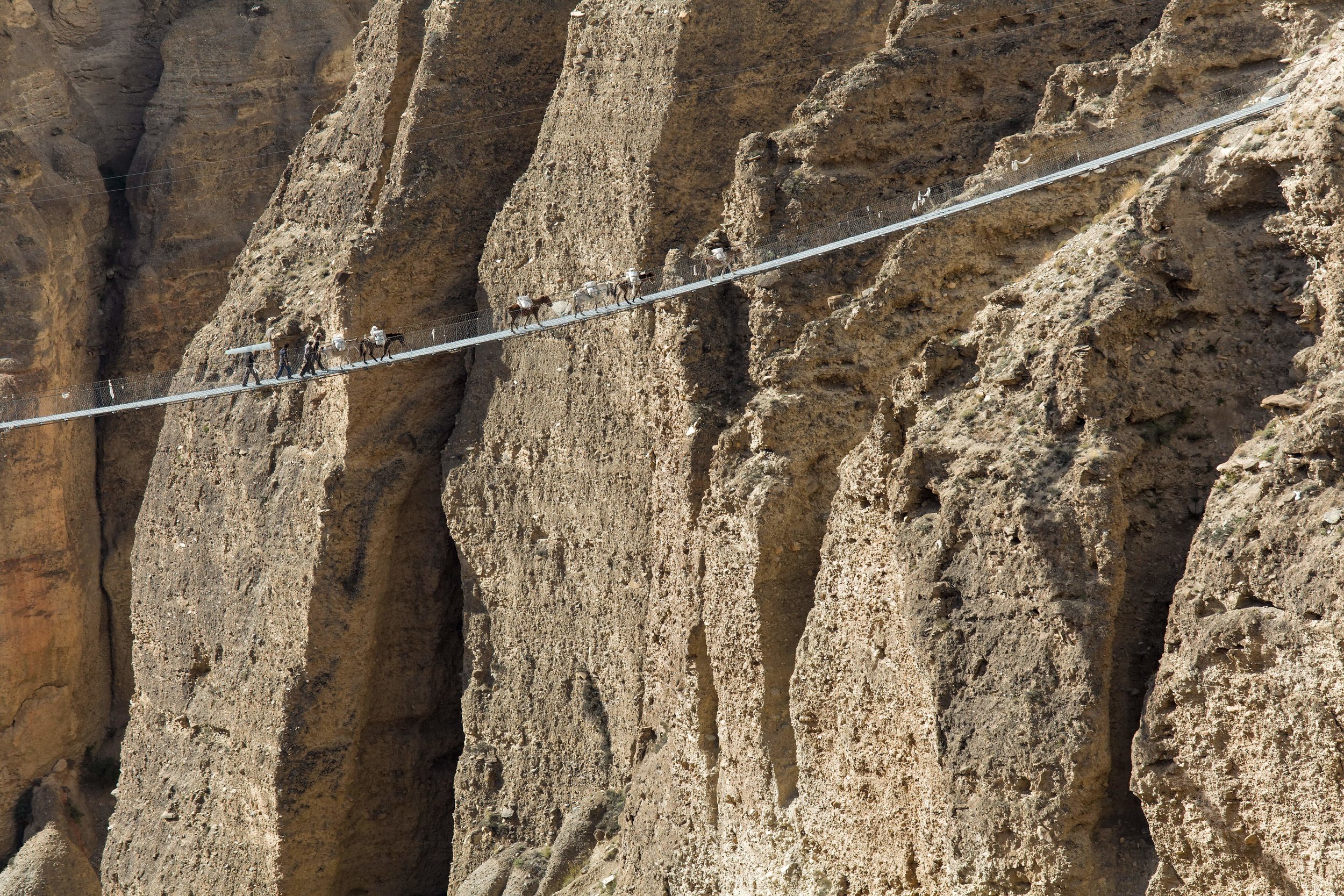
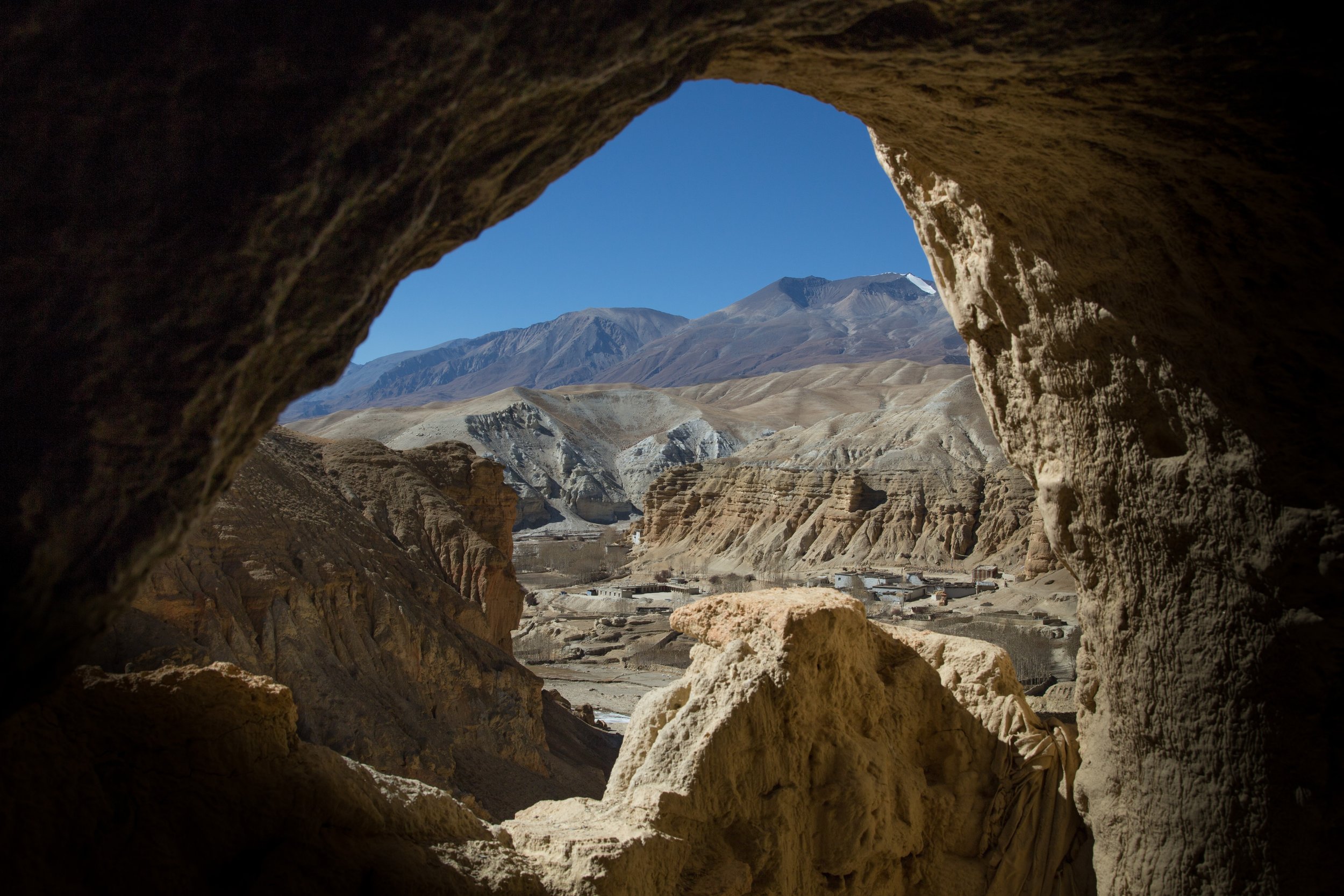
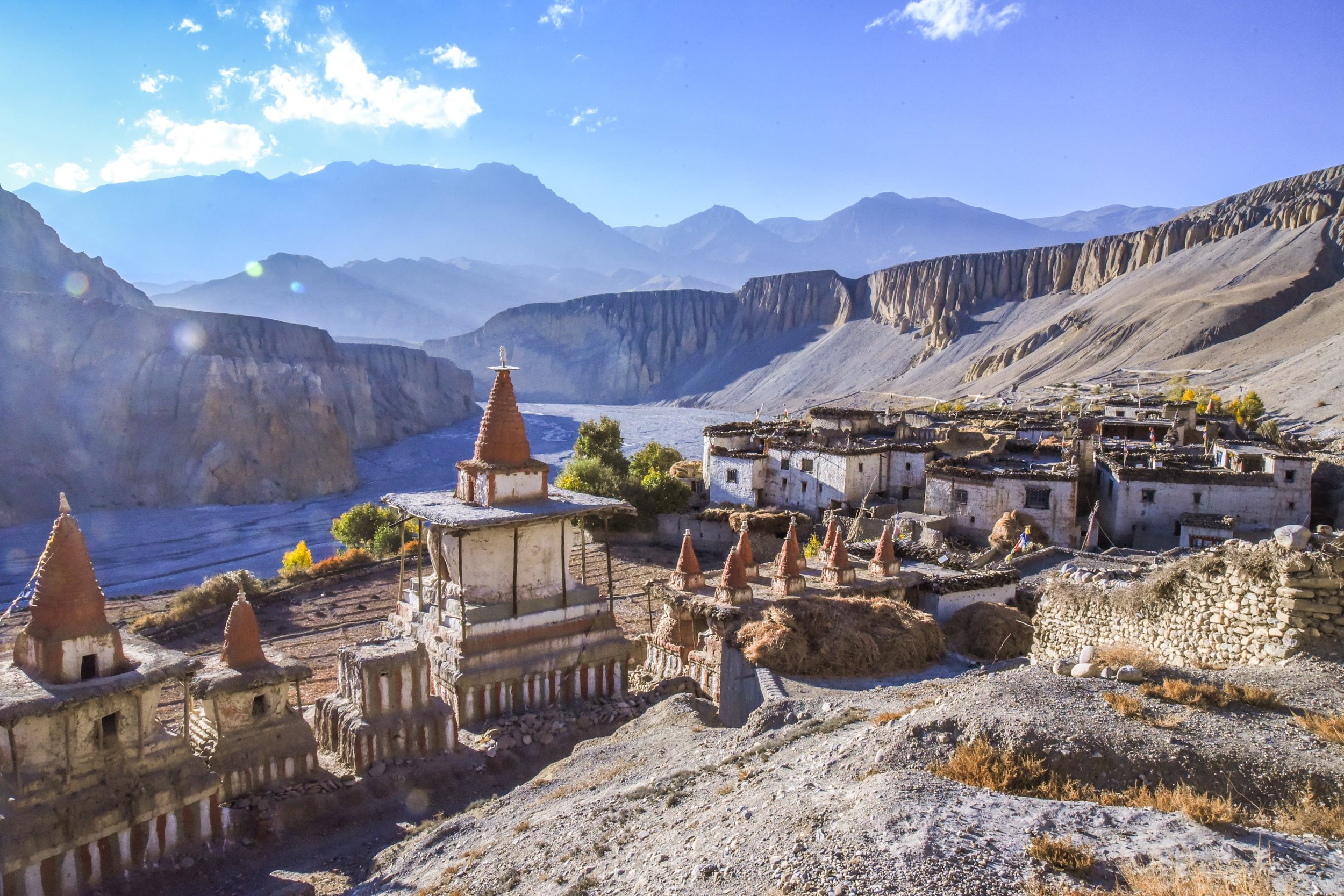
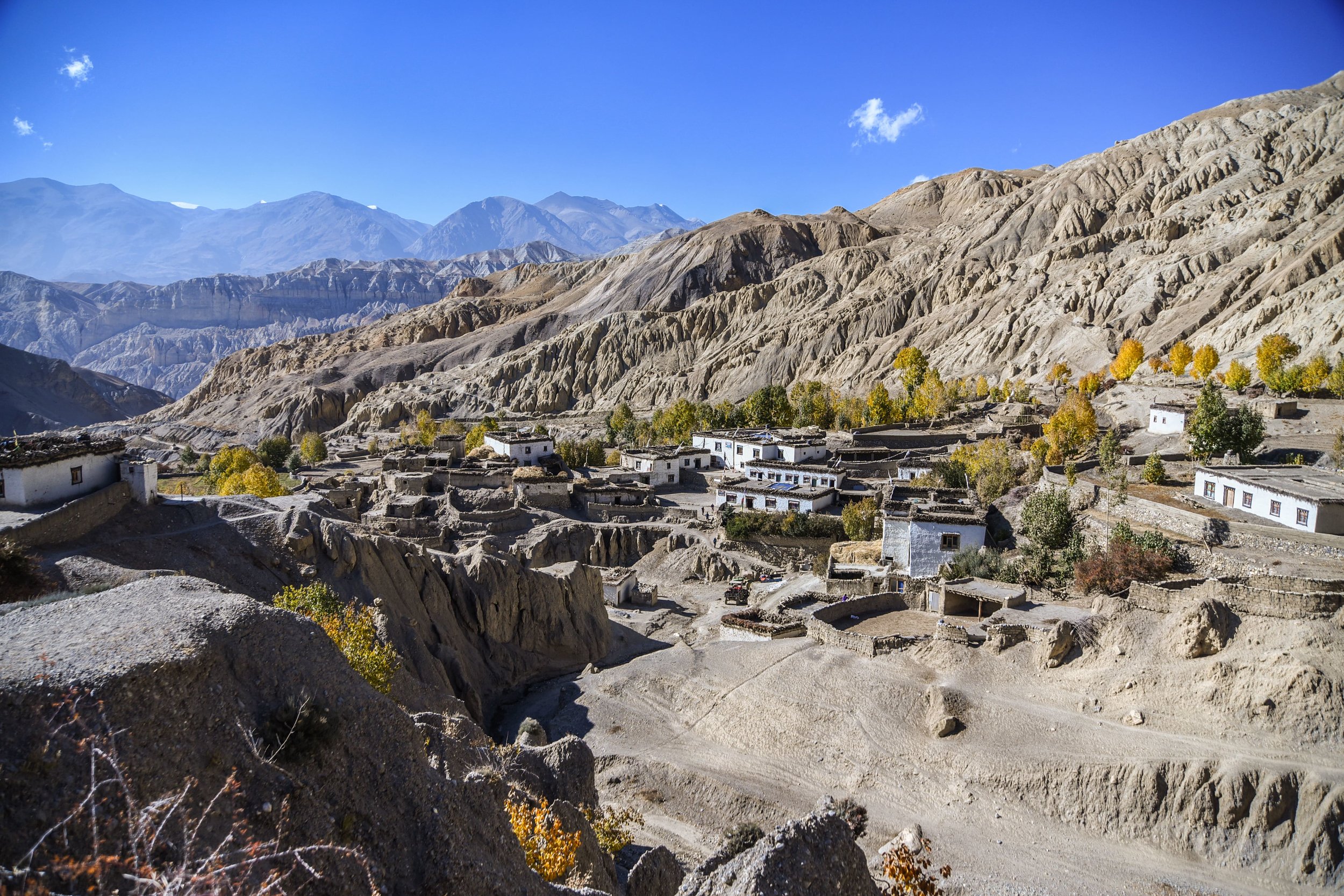
Annapurna Circuit ( 17 Days )
Months during summer ( Monsoon in Nepal ) recommended: Early June and Mid August
The Annapurna Circuit - appropriately known as Nepal's classic trek - offers more variety than any other equivalent length trek, and will take you through virtually every type of scenery that Nepal has to offer. You will witness superb views of the Annapurna and the Dhaulagiri mountain ranges and an amazing variety of landscapes varying from sub-tropical through alpine peaks to an arid semi-desert akin to Tibet. The climax of the trekking involves crossing the iconic Thorong La Pass (5416m). The majority of the trip will be based in tea-houses throughout the route where you will also get time to spend in villages inhabited by many of Nepal's different peoples, both Buddhist and Hindu. Like Mustang region, this is the only time of the year where the floras and faunas bloom which occurs due to light rain sprinkles brought by the escaped monsoon clouds from the Himalayas.
If you would like to travel to Annapurna circuit, we have fixed departure dates announced. ( Click here ) for detailed trekking adventure information.
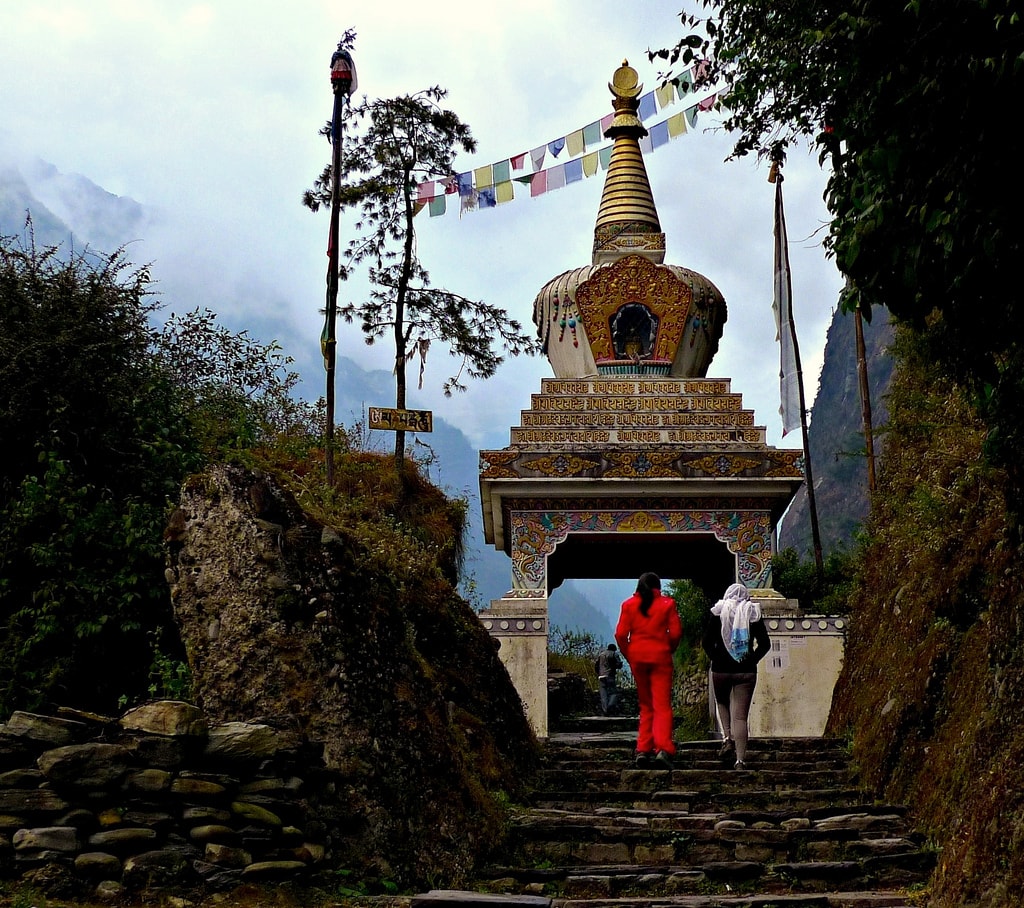
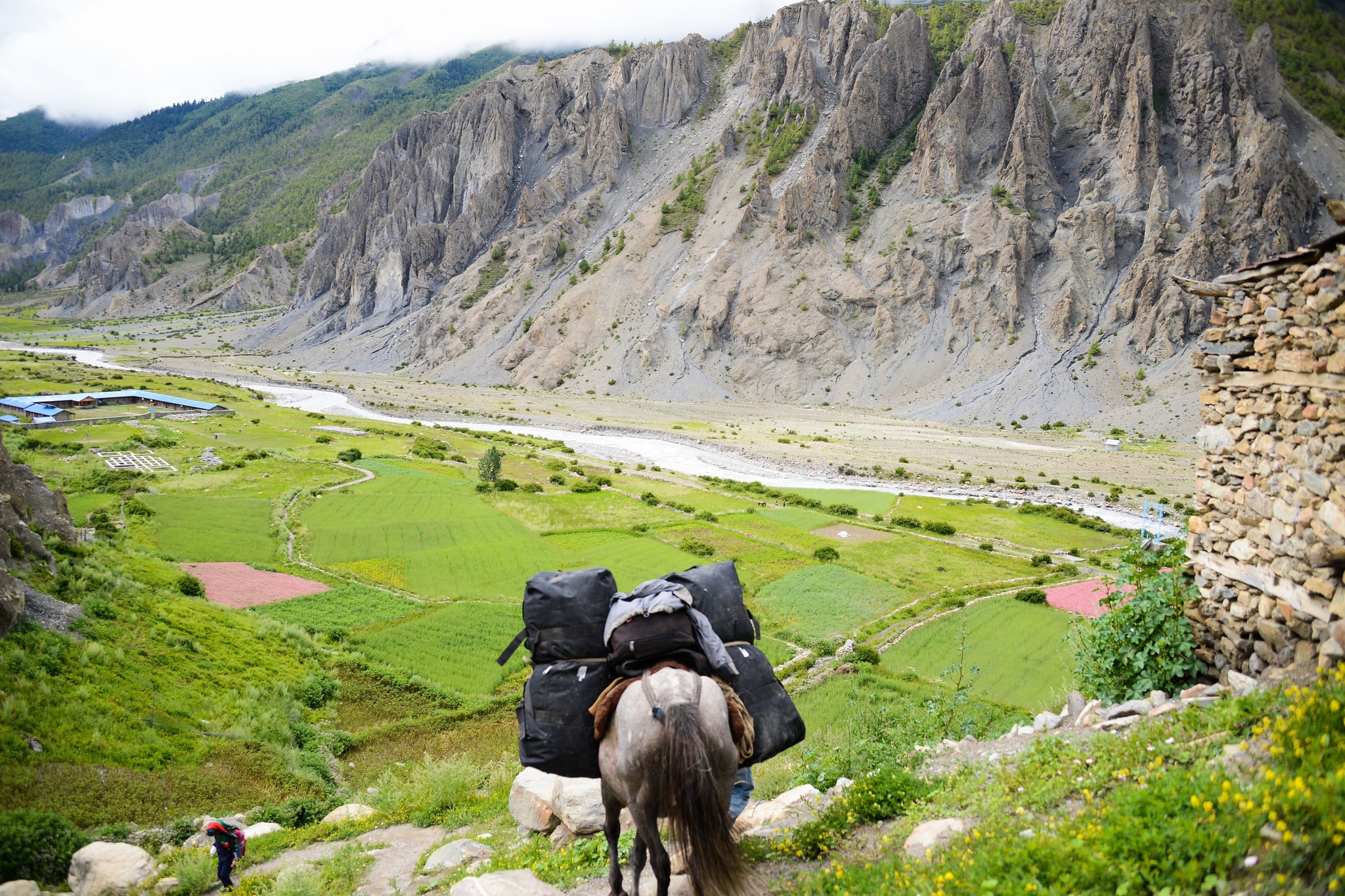
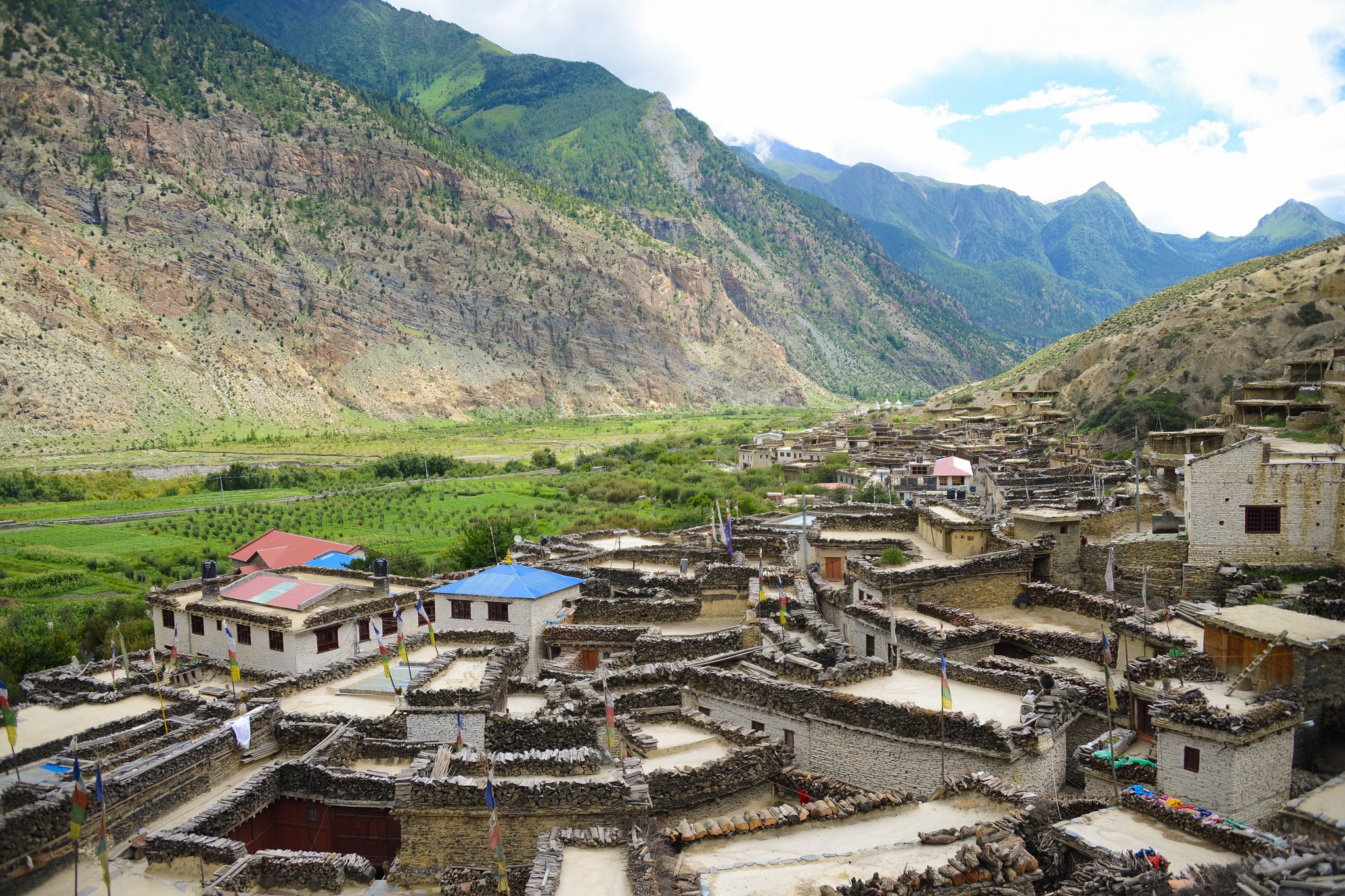
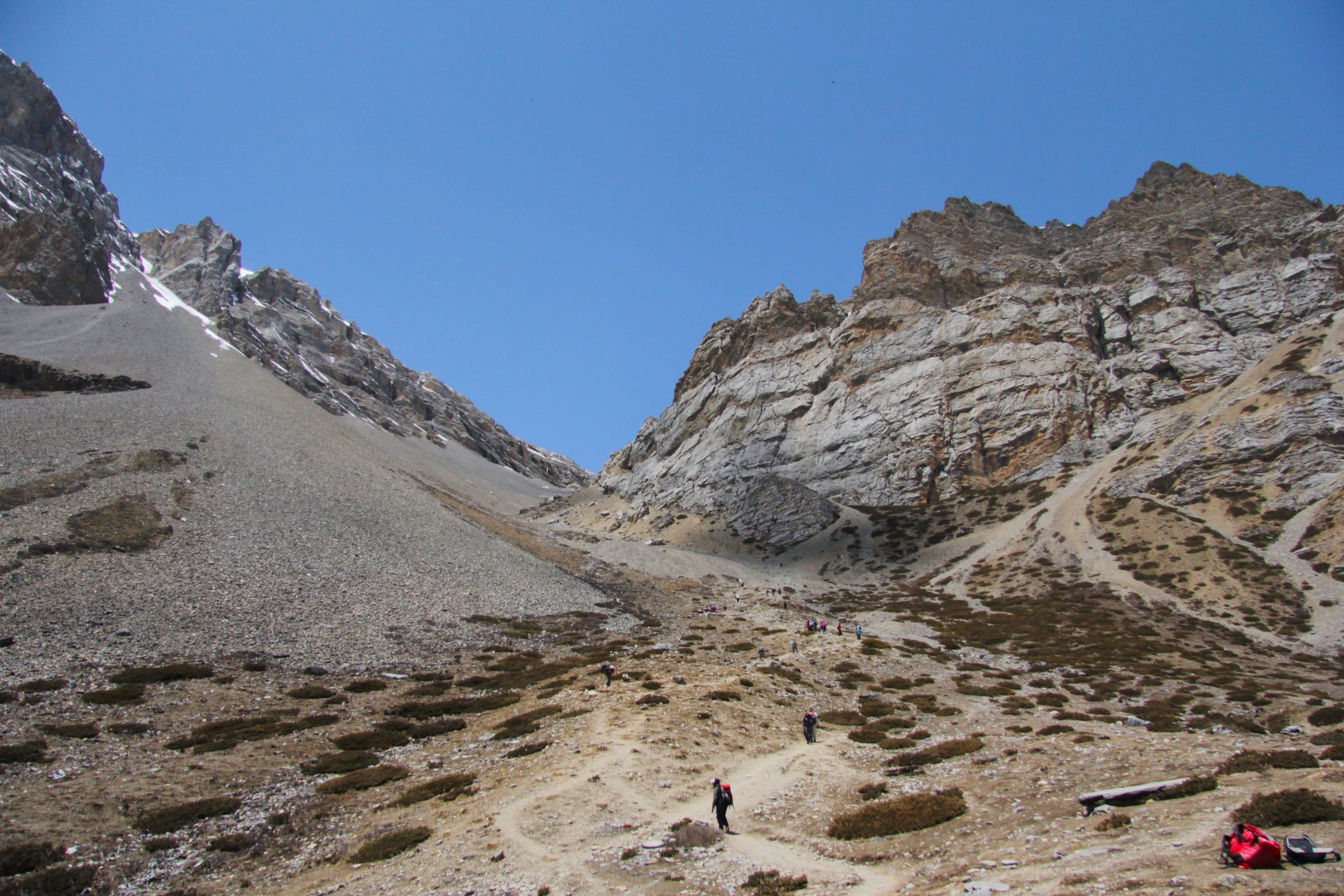
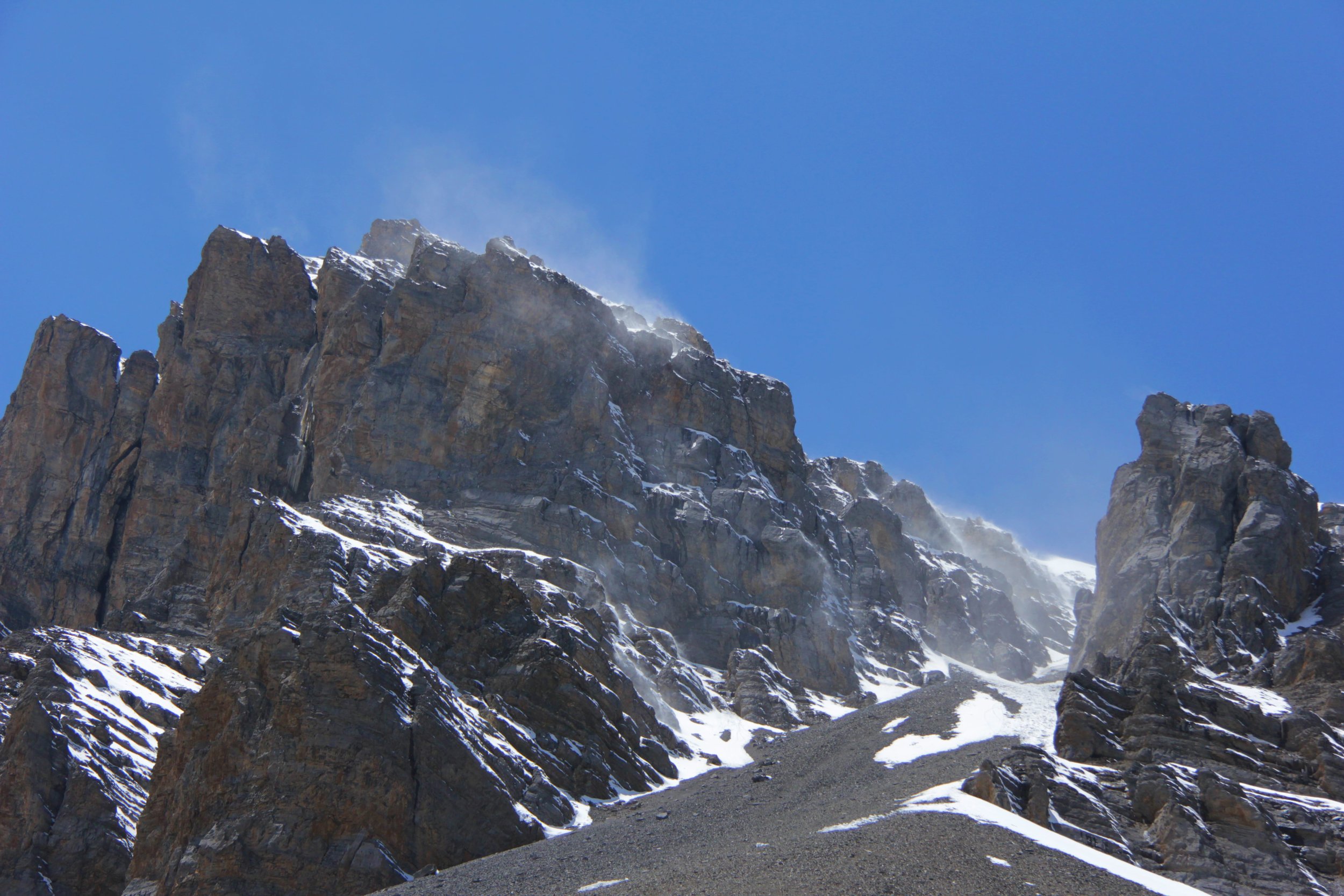
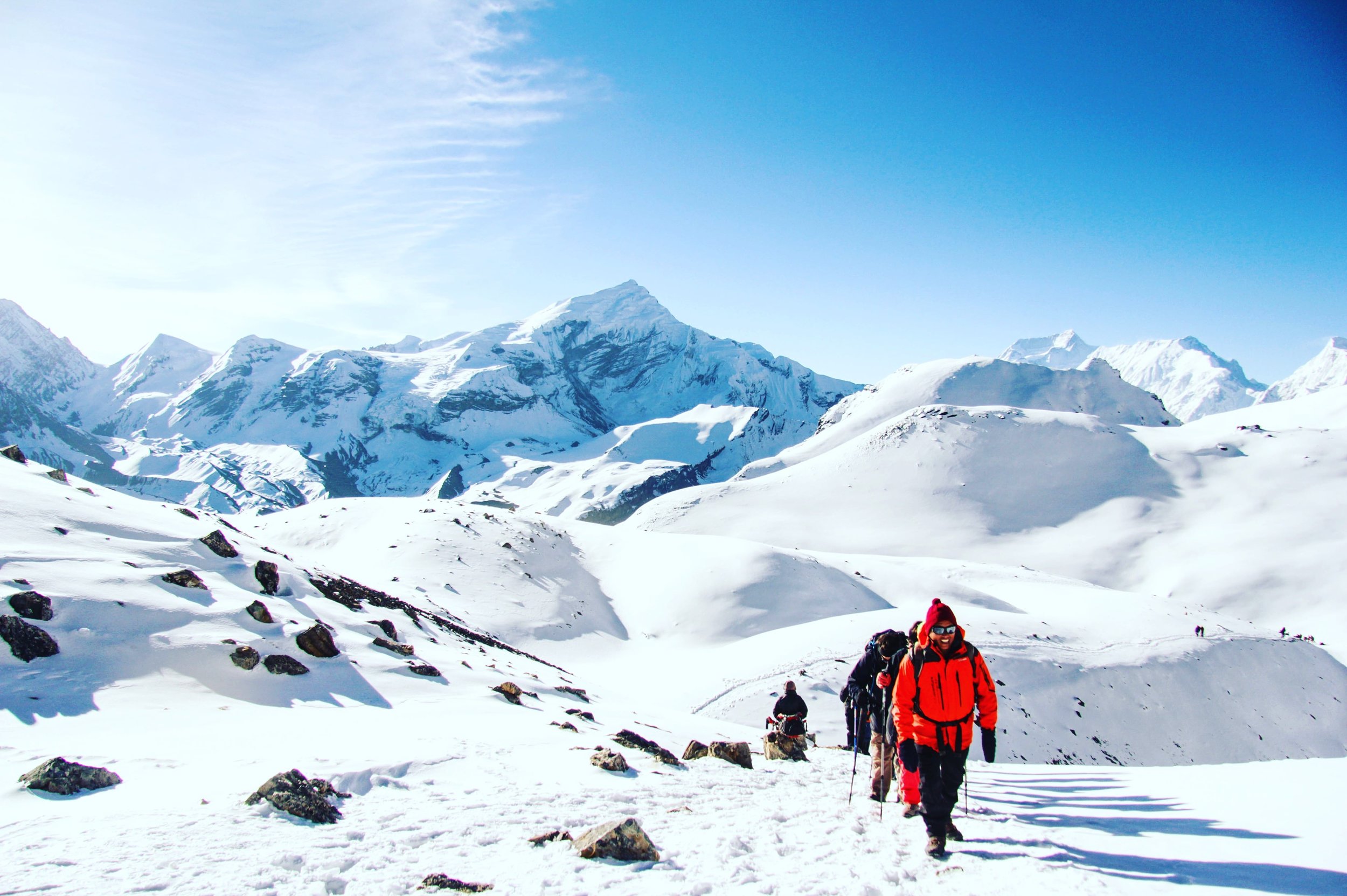
Dolpo and Phoksundo ( 30 days )
Months during summer ( Monsoon in Nepal ) recommended: Early June and Mid August
Trekking the Dolpa Circuit is an experience you’ll never forget. You’ll have the opportunity to experience life in the remote highlands. The trail passes through a variety of landscapes ranging from green pastures (in some ways resemblant of the European Alps), to barren rocks that extend into the Tibetan plateau. The Phoksundo Lake is of an incomparable beauty, with its deep blue and emerald colors surrounded by steep bold rocks. On the way, you’ll encounter small authentic villages steeped in Tibetan culture and tradition. Buddhism and Bonpo are very important for the people living in these villages and interwoven in everyday life. Bonpo religion is the oldest spiritual tradition of Tibet. It is very closely related to Buddhism but has more shamanistic and animistic influences contributing much to the region’s mythical appeal. Due to its remote location, Dolpa is still an “off the beaten track destination”. Tourists are few and far between, especially in the summer months. The Dolpa Circuit is a quite strenuous trekking with some steep climbs. The trail ascends to two high passes, Numa La (5318 m) and Baga La (5190 m). These crossings involve long climbs and long descents. That being said, the scenery on the way, the views from the passes and the encounters you will have with the Dolpa people will make it all worth it. Camping is recommended for this trek. There are basic guesthouses in Juphal, Dunai, Lingdo, Dho Tarap, Ringmo, close to Sanduwa (next to the Amchi Hospital), Chhepka and Kageni. At the other places, you will have to camp.
If you would like to travel to Dolpo region, we have fixed departure dates announced. ( Click here ) for detailed trekking adventure information.
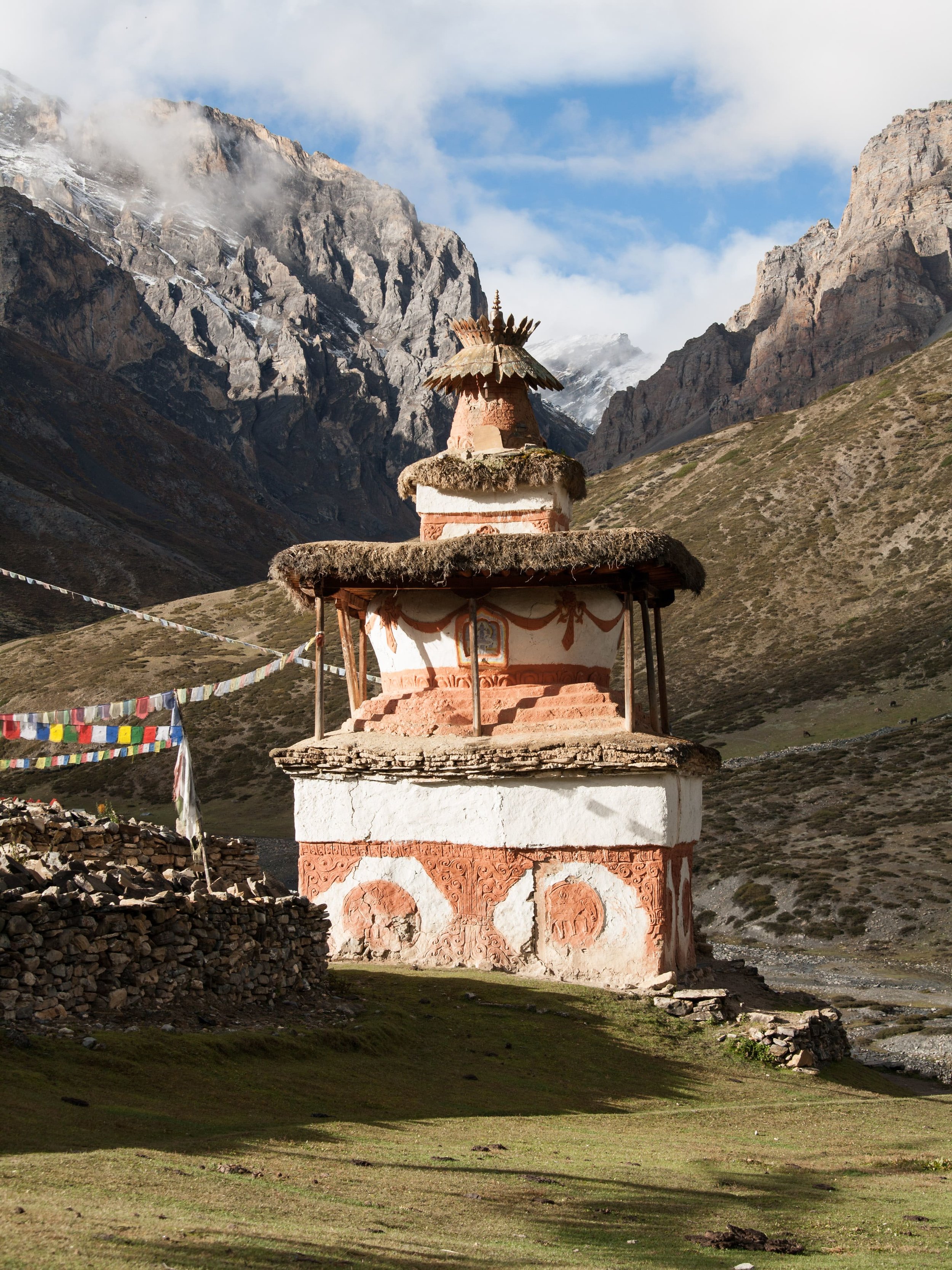
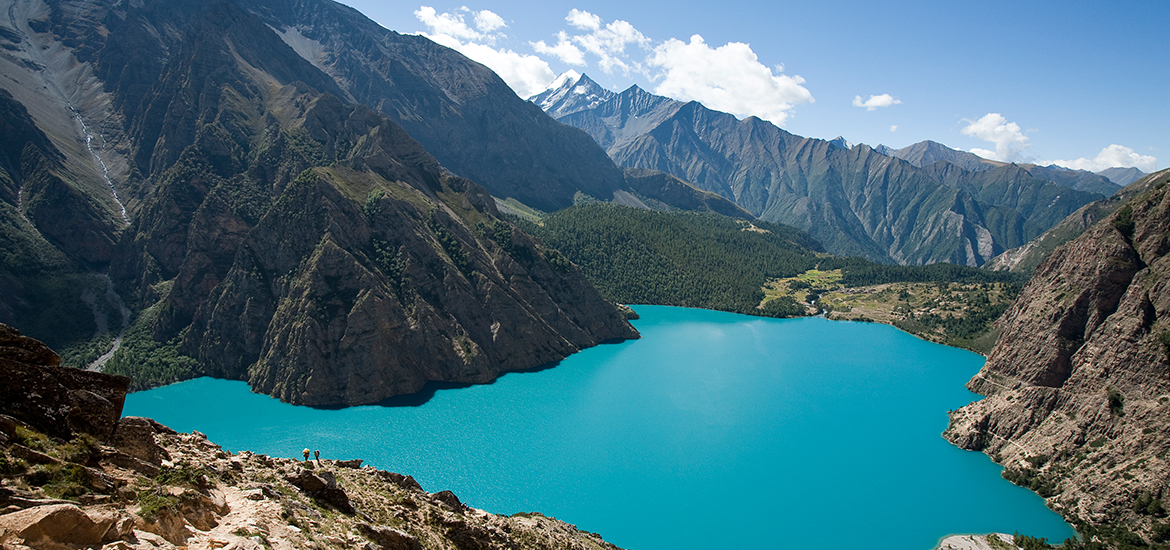
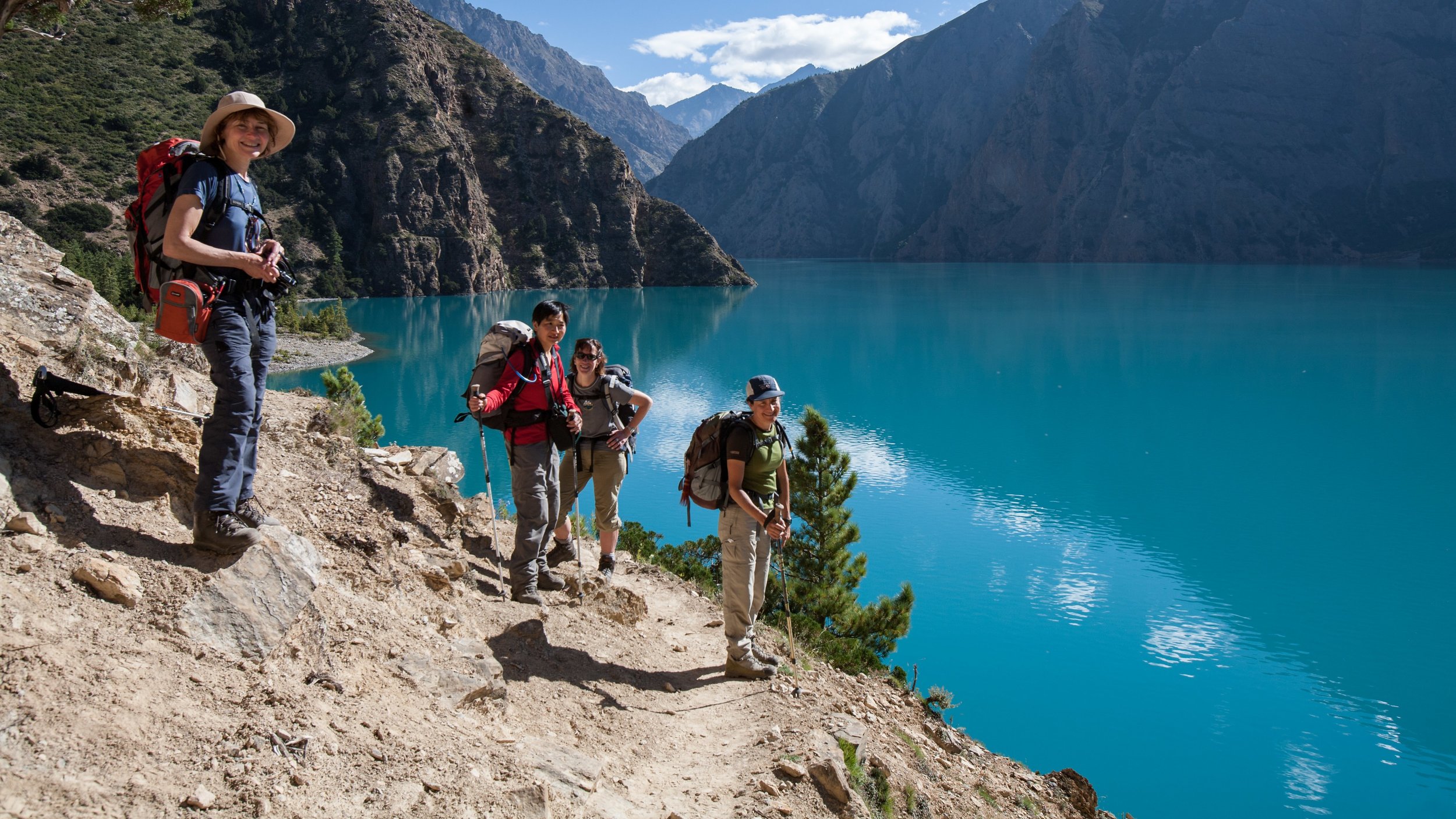
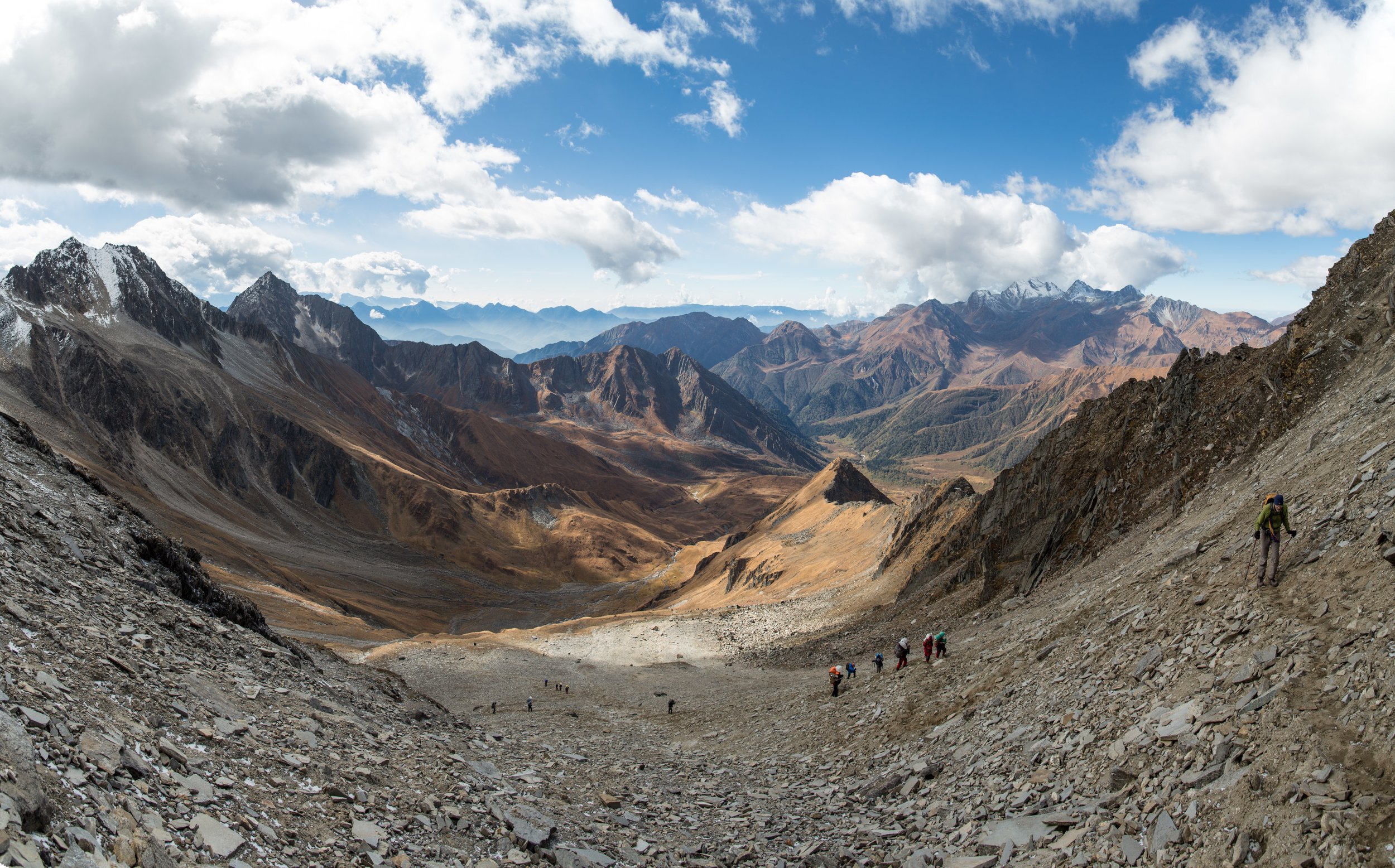
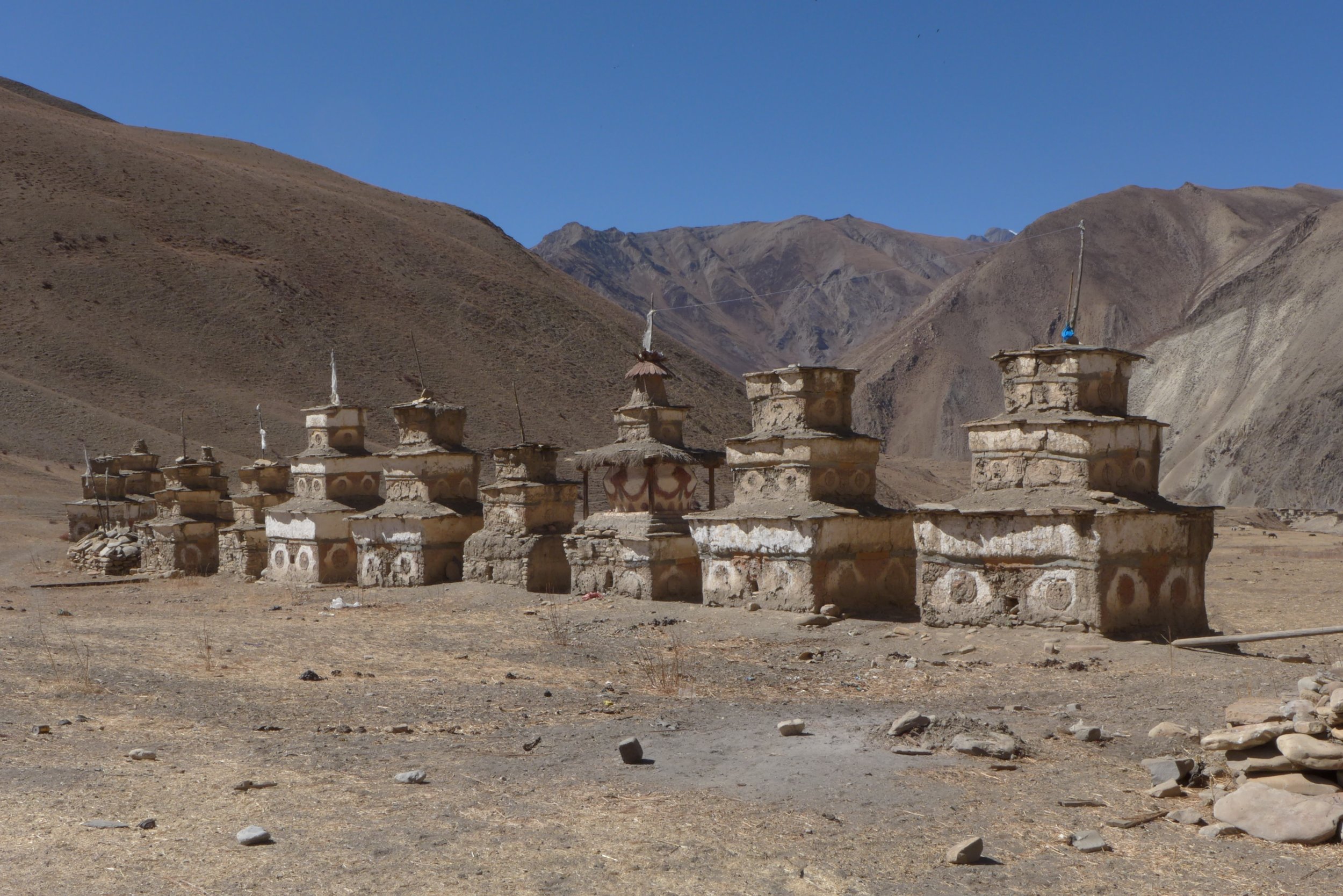
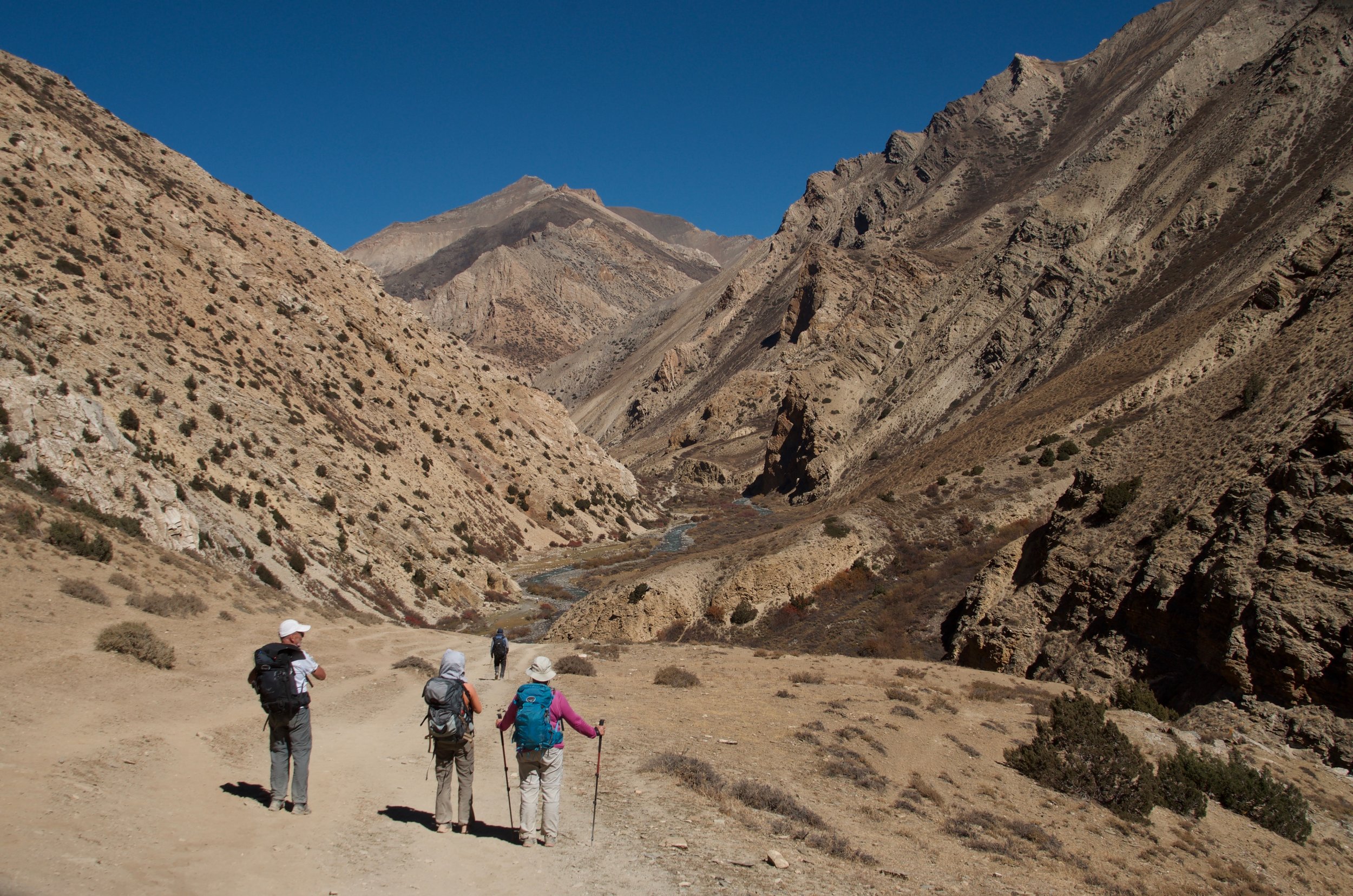
Soft Adventures ( Culture and tours )
Kathmandu is open for tourism throughout the year. If you are looking for short relaxed local guided tours with spells of cultural activities in your travel plans then tours like temple run ( click here ) and visiting monasteries, UNESCO heritage durbar squares, museums are recommended.
Also, tours around outskirt villages of Kathmandu are possible. Paddy plantation festival falls around mid-July every year and this can be experienced around this time of the year. This is one of the activities that is unique and has been drawing attention for authentic travel experience.
To plan your adventure, please email us at namas@namasadventure.com for travel advise and other expert advice on adventure travel recommendations.
Written by - Bisesh Gurung / Founder
Credits:
Pictures by
Dolpo - Jamie McGuinness (https://www.flickr.com/photos/jamie8848/albums)
Dolpo - Mayriam Kaba
Upper Mustang - Jamie McGuinness (https://www.flickr.com/photos/jamie8848/albums)
Annapurna circuit: Huey yoong (https://www.flickr.com/photos/bluryee/)
$20 by 2020, a case for our himalayan porters
Photo by - Jimmy Walsh
Over 700,000 tourists come to Nepal every year to trek and climb the great Himalayan peaks. Most of the trekking routes in Nepal are located high in the mountains; are full of difficult terrain; and often have no roads for vehicles to pass through. It is by sheer, unadulterated raw strength that supplies reach the high-altitude areas of settlements, necessary to both locals and tourists, during the journey up the grand peaks. Those who do this legwork are known as: porters and it is because of their strength, life and business can coexist in these remote areas. Consequently, tour operators who offer trekking and hiking services hire porters to carry their clients’ luggage, tents, and other equipment that are unable to carry. Each porter’s daily distance is determined by their tourists' itinerary.
Photo by - Itai Boublil
During my conversations with all the trekkers, Himalayan hotel owners, airlines, Sherpa guide leaders and porters, I was struck by the salary porters received- unarguably meager in return for their not only valuable, but also extremely laborious work. On average a porter offering their services in Nepal earns $12 (Rs. 1200 – Rs1300) per day carrying upwards of 30 Kgs. Often, the more they carry the higher their earnings, therefore, it is not rare to see porters piled high with luggage making their way to the tourists’ nightly destination. I also found out that although porters may be able to sleep in lodges depending on availability of space, their food and more often than not, accommodation too, are both something they must factor and budget within their $12 daily salary. In short, their $12 wage dwindles to $7 after spending around approximately $4-5 on food and accommodation.
Photo by - Roger Nix
I’m glad to say today that voices have been raised on behalf of porters to address their disproportionate pay and insufficient working conditions. Porters' Progress (www.portersprogress.org), a non-profit organization, was established in 2000 to help protect the interests and livelihood of porters. They distribute jobs, offer a lending programme for equipment and hold classes in English, health, hygiene and altitude sickness prevention at their offices in Lukla. Today porters ask for $17 a day for their work, which would allow them to cover their food and accommodation costs and still keep the full original $12 a day. However, despite only asking for a small $5 dollar raise, little progress has been made so far towards reaching this proposed wage. Unfortunately, with the lack of education and alternative jobs prospects, porters are left with little bargaining power to demand this change.
We at Namas know first-hand how hard the porters work to carry supplies for tour operators and tourists. We also understand that without them Nepal’s trekking regions will face herculean struggles. In line with our core values, from this year, 2018, onwards, Namas will commit to paying porters their desired $17. Moreover, because we know we can do more, Namas aims to raise this base salary to $20 a day by 2020. While this means we can’t always offer the most competitive prices for our customers, by finding efficiencies elsewhere and a rigorous approach, we will ensure that there will be little to no impact on our customers. Our past and present customers all believe in what we are doing, and we are sure our future clients will also support us in bringing forth this positive and much-needed change.
Photo by - Usuf Islam
Thank you and we hope you too can soon become a part of our great adventure, as we continue to live out our stories.
Founder
Bisesh Gurung
Namas Adventure
Edited by - Shanti Rai
World's Most adventurous airport. LUKLA
Ever since I have voiced my want to trek Everest, everyone has been asking me one question. Is the airport and plane ride safe? I think the tag “World's most extreme and dangerous airport” (The History Channel, 2010), has given Lukla Airport a negative connotation that there are accidents every day or every month. This is not the case at all, but one can see why the calamitous perception.
On paper, Lukla airport is the perfect recipe for what could be a knuckle-biting near disaster. Only certified carriers (STOL) and pilots can take this 40-minute long flight, during which you will find yourself dodging mountains and flying through thick, white smothering of the surrounding clouds. With the unpredictable weather and no navigation aids, pilots must use their visual flying skills, which as I mentioned are at times blurred, and their empirical knowledge of the area’s terrain.
Reaching the end, you are faced with a beautiful view of the small, colourful town of Lukla at an altitude of 9,500ft, perfectly ready to have your trekking boots on the ground. But here what you see may not be the best for your blood pressure. Here, it’s time to find another reasoning behind the infamous name, that is, the relatively tiny runway. Sitting at only 1,729-foot long, a very tiny strip in comparison to Heathrow’s 12,802-ft, this timorously tiny runway is coupled with the fact at one end of the runway is a steep cliff with a 2,000-foot drop and at the other is a solid, stone wall. The plane either lands, or falls off the cliff or hits the wall.
However, as apprehensive as what I have described above may make one feel, the reality is quite anticlimactic. Given good weather, most flight activity happens between six and nine a.m., and during peak season there can be up-to 30-50 flights a day. While the airport only handles 4 planes at a time, it’s a quick switch over to take the waiting trekkers back to Kathmandu and before you know it the planes are flying back already in the next 10-15 min. Furthermore, given Nepal depends heavily on tourism, especially in the Everest and Annapurna region, and flight safety is given the utmost importance. It is carefully followed at both regional and governmental levels and I can say by experience that they don't take the flights lightly for Lukla flights. The bummer tends to come in the only one other form, an externality which I advise all travellers to be aware of. The biggest problem is often the temperamental weather.
Sitting at such high an altitude and in such vigorous terrain, the sky which looked clear a few minutes ago, can suddenly change with winds blowing swathes of fog and clouds obscuring visibility. At such moments, for safety all flights will be stopped, and should the weather persist, ending in cancellations. This is why, although flights are scheduled to run from 6am to 5pm, I say most flight activity takes place between 6-9am. I encourage all Everest trekkers to have a contingency plan in case weather turns bad and there is cancellation of flights. We recommend an extra 2-4 days to allow for flight cancellations and re-bookings or extending your budget to include helicopter expenses.
Downhill runway
If you decide to charter a private helicopter, then it will be $1500-2500 for 5 - 6 people (the higher margin to get from Kathmandu to Lukla). When flights are cancelled, as is so often the case with later flights, there is also a good chance of unused seats in the helicopter flights and you can ask your tour company or helicopter companies to query whether there would be space for a smaller party (1-3 seats) to join ad hoc. It saves costs, lessens wasteful use of time and resources for all parties involved and we recommend speaking with your tour provider to see if and how they can help you in such a situation. In the case of cancelled airplane flights, you are entitled to the refund so be sure to query this with your tour company, or the airlines if you didn’t use one.
Third-party tour operators are imperatively valuable in such situations as their network allows them to get up-to-date information from both airports involved and search for the contingency flights. A recent case caused much confusion when, although the weather be sunny and clear in Lukla, the airport closed. It turned out the route from Kathmandu to Lukla was turbulent and unsafe to fly, but at Lukla one couldn’t see that far into the distance. A wide lens is needed when dealing with this route.
While one can after gaining experience trek the Everest route by themselves, the stress involved in getting to the starting and ending point of Lukla, arranging back-up flights, especially if you don’t speak the language, is exponential. Along with the aforementioned, perhaps “World’s most stressful…” is also a fair description. Tour operators and their teams are highly experienced to deal with unexpected situations, and the reason why it is still rare for people to make this trek on their own. At Namas, we have staff members who watch the route on both ends as well as partnerships with airlines and helicopter providers to ensure hassle-free flights. If you are planning to go to Everest base camp (click here), we have several dates announced for 2018. We take care of all your accommodations, flights, flight transfers, local Sherpa guide and porter service and meals during all trekking days.
Nevertheless, for those wilder ones, if you are planning a solo trip, here are some pro tips
Price one way: $160 - $175(one way) Kathmandu – Lukla and it is best to choose an early flight.
Speak to helicopter providers working in this area.
Return flights to Kathmandu - Confirm your ticket with your airlines a day before in Lukla. This is very important or else the operators assume that you won’t be taking that flight and will add other passengers to your seat. Speak to your hotels or tea houses staff in Lukla, most of them knows the airlines staff and will help you confirm your return tickets.
Peak season: April/May (Spring) is very busy with mountaineers and most of the tickets are booked for mountain climbers and big groups and October(Autumn) is another busy month. It can get very hard booking flights during these months, so plan early and reserve early (or you will have to count on your luck :D).
TIMS and Everest region permit is a must. (link)
If you hire a porter at the Lukla airport, please pay them $18-$20 a day. The real wage is much less as they will be using this daily rate to pay for housing and food along the route. (Be a responsible traveller)
Alternative routes to Everest region, 14 - 16 hours vehicle ride to Jiri from Kathmandu which adds extra 2 days to your Everest itinerary.
If you have any more questions regarding your trekking plans for Everest, please do let us know below in the comment box or in our email namas@namasadventure.com.
Happy Adventure.
Written by - Bisesh ( Founder / Namas Adventure )
Edited by : Shanti Rai ( Namas team member )
Contemporary Superstitions: Frills, fancies and sources of hope
We are all superstitious at heart; if not heart, then gut for sure. Granted science has greatly weakened the influence superstitions once held in society and governance, each of us, in our own way, at the risk of appearing irrational, contribute towards keeping the flame of superstitions alive. Here is why we do it.
But first let me clarify that the type of superstitions referred to here, are not the type that infamously exploit the weak; oppress the vulnerable; and indoctrinate the uneducated. Times have changed and fortunately for witches, I mean, women, the hypocritical basis behind witch-huts, and other similar prejudiced and myopic superstitions, have long been eradicated (no, women are not responsible for drought; famine; or anything else men cannot explain). Not everywhere, of course. Science has yet to reach all parts of the world; growth and progress likewise. Nevertheless, in majority of the developed, secular world, zealous adherence to repressive superstitions are definitely becoming a thing of the past.
The superstitions of today are all relatively harmless. As the world has changed to adapt to science and technology, superstitions too have changed accordingly. In order to suit the rationale of the contemporary society, they have forsaken their credibility, and with it their oppressive, dictatorial attributes. Instead, they have refashioned themselves into silly (jumping over legs shortens leg length); superficial (lucky charms); and sentimental; nostalgic (wearing something borrowed, something blue, something old and something new on your wedding day) frills and fancies. Furthermore, whereas in the past superstitions was dogma, therefore absolute, now its practice depends entirely on the respective individual.
It's up to you whether you want to risk the Sun god's wrath by opening your umbrella indoors or not. It's up to you whether you want to risk crossing the same road a black cat has just crossed. It's entirely up to you whether or not you choose to: clip your nails at night; walk under ladders; or worry about the impeding seven years of bad luck you are meant to incur, if you ever break a mirror. The rational, sophisticated mind knows that it matters little whatever action it takes. The end result will not be affected.
However, it's remarkable how many people find themselves altering their behaviours once they become aware of a superstition. For example, let’s say a friend tells you that whistling at night can attract demons (and you are a notorious night whistler). You will initially guffaw at your friend and dismiss the entire thing as silly and ridiculous. Nevertheless, next time you find yourself alone at night, it is highly likely that you will not whistle (no matter how strong the desire). Unexpected glimpses of black cats; owls; and black beetles too can prompt cautious behaviour in many.
Perhaps it is because humans have the ability to imagine. In a dark setting, it is extremely easy to mistake the rustling of trees for a villainous, evil demon, whose sole purpose you have deftly discerned, is solely to terminate your life in the most horrible and excruciating way conceivable. Or perhaps it is because deep down we know that demons do not always come in supernatural forms. Either way, when confronted with the possibility of death, we all become hypocrites. Fortunately for us, no extra effort is required to accommodate to this irrational whim, nor will anybody be harmed in the process. Thus, the rational individual (notorious whistler), convinces itself that it would probably be best to leave off whistling for another day - a bring sunny one at that, especially if it can ensure them their life.
This is how modern day superstitions work; have always worked. They plant seeds of doubt and fear into the unsuspecting, confused and susceptible mind. The seeds will not immediately sprout; in some it might take years, entire lifetimes. Nevertheless, it will only take one random event where you notice a black cat crossing the road, pay no heed to it, then end up in an accident, for the seed to flower indefinitely. Forget the hundreds, thousands of black cats you have ignored in the past, it is only this particular cat that counts. Soon you will be recounting the tale to another unsuspecting friend, and in this way the flames (seeds) of superstitions spread.
In our defence, acceding to superstitions does not automatically make us all hypocrites.
Science is heralded as the source of all knowledge. In life too, we are to taught from an early age that we are the masters of our fate, and if we will it, and work hard for it, then we can make all impossible possible. But of course, we all know this isn't entirely true. In all fields of knowledge there will always be anomalies and grey areas. Fluke and contingencies also play much bigger roles in our life than we are taught to expect. Occasionally we realise this. Every once in awhile, we become aware of how impotent we are. How any minute now, a murderer could appear out of nowhere; or a bus; or the tectonic plates deep underground could shift and turn our whole life upside down, inside out. One second we are alive, the next dead. Understandably, this can unhinge even the strongest of minds. Certainly they are irrational fears, but they do happen. Consequently, when meaningless accidents; incidents; or worst death occur, no amount of knowledge can help us through it. We are left exposed and naked; masters of nothing, and no one. In such a situation, our minds instinctively does its utmost to protect us from this terrifying unknown.
Superstitions: magic, supernatural, luck are one of the many mechanisms employed by the mind to combat and defend ourselves from these irrational fears. They cannot resolve them, nor eliminate them, but they can offer a way for the individual to mitigate them somewhat. Superstitions are always quite frank in their instructions. No whistling equals no demons. It acknowledges our deep rational, irrepressible fear of being followed by a serial killer, under the cover of darkness, in parks; isolated meadows, anywhere lacking other fellow human company (I mean, we all watch the news!). However, by following the superstition's instructions and refraining oneself from whistling, we can at least distract our mind from the fear; reassure ourselves that our silent, stealthy walk is enough to avoid any detection, as we try not to make it too obvious by breaking into a sprint. It does not work for everybody, but it does work for some.
People are also more prone to be superstitious when they are trying to protect others.
Say your favourite team is losing; your young, kind, naïve daughter is off on her first trip abroad; or your friend is about to get married and she is petrified. You wish to help them or at least provide some sort of support, but there is very little you can do. Except of course: start singing the team's lucky song alongside the other fans; give your daughter a lucky pendant and make her promise not to ever lose it, ever. And tell your friend that change is good, love is worthwhile and if she believes in the two, then everything will turn out fine.
By singing; providing a lucky charm, and encouraging a friend to have more faith, we can alter nothing. But we are able to boost the morale of a losing team; convey a parent's fear to a daughter without being overbearing; and restore faith in a friend when she needs it most.
Deconstruct superstitions and you will realise that they are all just held together by hope. Hope from a sincere fan that their team will succeed; hope from a loving parent that no harm shall pass their child's way; hope that your friend will recognise all marriages require a leap of faith and she of all people can leap magnificently.
Even the silly ones: jumping over legs, communicates every parent's hope for their child to grow tall and strong (necessary to reach high shelves, which our world has a lot of). Never giving shoes as a gift to a lover, expresses the hope that they won't leave/run away from us. A friend of mine told me that when she and her brother were younger, they were warned not to eat in a sleeping position, otherwise they would turn into a snake. A mother's hope perhaps, that her children would not have upset stomachs in the morning. The brother of course would deliberately eat while sleeping in the hope that he would wake up a snake.
To conclude, ironically - and here I must make it clear again that I am referring to the more light-hearted superstitions found in contemporary society - superstitions enable a rational person to hold on to their rationality. Undoubtedly they have now become a fancy, but as in the past, they still remain a source of support to many. We can devote our entire lifetime; lifetimes uncovering all the secrets of our universe and in turn, ourselves. I was brought to up to believe nothing is impossible, so I will not write off this achievement completely. But it will not happen any time soon. Fortunately for us, mankind has created; invented; imagined multiple ways of making sense of our world. Superstitions are one of the many alternatives.
Essentially what we choose to believe in is driven by our survival instincts. As long as we have gaps in our knowledge; fear in our mind; and things to protect, when all available sources fail, we will willingly believe in the most far fetched superstitions if it can ignite even the tiniest flicker of hope within us. Sometimes the flame can be quite blinding.
Written by - Dina Rai
The Newari eventuality : Bisket Jatra a.k.a Nepalese New Year 2074
Photo by - Gerd Kholmus
Join Namas, Nepal and the proud Newari’s in Bhatkapur Durbar Square celebrate the new year, Bisket Jatra. Bhaktapur’s population congregates mid-April, just 14 mins away from Nepal’s chaotically organized temple capital. For these four days, Bhaktapur Durbar Square commences to become a regurgitating (albeit small scale) epicenter of showmanship in a battle of strength between the east-side and the west side. It is emblematic of the victory over good and evil, which alongside the journey taken by the god Bhairab in his chariot (roth) is played, a re-enactment of the devoted production presented by the locals every year. During Bisket Jatra one sees it is no wonder Bhaktapur was once known as the ‘City of Devotees’.
The chariots drawn through the streets rests at certain time-honored places in the city, people coming out to throw offerings of rice, coins and red sindur powder. A huge 25m-high lingam (phallic symbol) is erected in the stone yoni (female genital symbol) base. Their union the eternal process of creation and regeneration, the union of male and female principles, and all existence. It is now ready to be theatrically decimated; the pole crash-landing down signifying the beginning of the new advent calendar.
A new year is welcomed.
Happy Nepalese new year from the Namas Team.
Written by- Shanti Rai
Photos by : Romancing the planet
Gearing up for the colour fest that is HOLI 12.03.2017
Images by Himalayan times
There can be no one in Nepal who dislikes Holi, the country comes to a halt to celebrate this national holiday. If there is, it is as rare as finding a Nepalese person who dislikes momo (find the delicious article here)- a seriously unsettling Nepalese person to meet. Remembering back to when I was very young, peering over our veranda, I watched the world and everyone in it having fun in Holi.
Holi brings out the best in young generations, and creates their most cherished, fun memories. That which happened was never pre-planned, not as planned as time are now. Youth gather in their groups riding their trusted bikes, fully color bathed in different ways, painting the faces of their friends and passers-by as they drive by and vice-versa, carrying colors or water-filled balloons, frolicking around city roads and alleyways to join the other unknown group where they reach a color fight crescendo.
The young generation gets carried away on this day as helmets are off the limits and throwing caution into the wind, you would often see 3+ people riding on one bike. The larger the group, the better the party is what the thinking is. People drop colored waters, catapult balloons, lather each other in vibrant color powers and more than a few (definitely) alcohol stops are made along the way.
The colors do their magic, tinting (pun intended) the vivid mood on this vibrant day.
Written by - Shanti Rai
The persistence of festivals; Dashain and Tihar
I don't think most of us truly understand what we are celebrating when we participate in festivals. Perhaps our parents generation do, but as for us post war; post globalization; post secular kids (young adults ahum), the meaning escapes us, or rather the desire to familiarize ourselves with the time-old stories; histories and traditions about gods and deities; good and evil, and the myriad sacrifices made by mankind hold less appeal.
Rather, the twenty-first century heralds a time where despite growing economies and vast technological and scientific advancements, the future in which we can envision ourselves securely paying a mortgage, let alone buying a house, is one that is becoming more vulnerable day by day. Therefore, yes Dashain has arrived and Tihar is around the corner, but who has time to appreciate the challenges faced by Ram and Sita, when we have our own challenges to face? Nor acknowledge the sacrifices they made and the demons they vanquished, when again, we have our own sacrifices to make and our own demons to vanquish?
Today most of us partake in popular festivals like Dashain and Tihar simply because we have to. It's a family thing; it's expected; one cannot displease one's parents throughout the entire year (certainly not Nepalese parents). If you are still young, then even better, you simply have to turn up to receive gifts, money and blessings. The array of food is also worth the journey from one relatives' house to another.
But it cannot only be habit and obligation that has kept the spirit of festival and tradition alive to this day. No. Strip festivals down to their barest essence and you will realise that there is only one simple reason for their outstanding longevity: because festivals bring people together.
In our fast-paced and often far flung existences, sustaining old and new relationships can be challenging. The internet has of course made it extremely easy for families, friends and acquaintances to stay connected. But it is festivals, especially family and community oriented festivals like Dashain and Tihar, that allow people to wholeheartedly indulge in rekindling; reuniting; and rediscovering lost or faded bonds. Festivals recognise the value of family, community and friendship and it is these values that the contemporary individual respects when sitting down to receive Tika from their elders.
Of course there are amongst the myriad, many contemporary Nepalese who are very knowledgeable in their understanding of Dashain and Tihar. There are also many rituals even the less knowledgeable perform almost as second nature: bhai tika is the one that is acted mostly by the children (with a few guidance by the parents). However, what this post is trying to address is the fact that understanding matters little when participating in festivals. Festivals are special and worthy of celebration, not because of their rich contexts and history; gods and dieties and traditional orthodox customs, but rather because they remind us to love and appreciate the people who have all contributed to create the individual we are today – regardless of what the future holds.
So make time. CELEBRATE and APPRECIATE. Dashain has come to an end but Tihar is just around the corner. If you did not have time to reconnect with your loved ones during Dashain, then I hope you do so during Tihar. But festivals are only reminders. Everyday is a good day to tell someone how much you appreciate them!
Therefore, from the entire Namas family “HAPPY DASHAIN AND TIHAR”! Let us today celebrate LIFE!
Written by Dina Rai
Take any road today (the world is already yours).
Photo by Rabin Rana
It matters not where you go, what path you take, or how you get there. It matters only that you are going. Every road is a thoroughfare, which connects one to the other; the other to the future. The future to the past. Take one today and you shall be following the footsteps of the millions that went before you, as you too shall be followed soon after by the millions yet to come.
Because, you see, life does not ever really change that much. A thousand years ago, life was trying to survive. And the fact that you are here today, means that it was successful. You are therefore, its success story. But what we do, is not any different. We are still only trying to survive.
Thus, whether you are pragmatic, romantic, or irrational; your approach to life head on, or slightly hesitant – your existence remains an accumulation of everything that has already happened, and everything that has yet to happen. You are the driver inside the vehicle; you are the passenger in the back seat; you are the tarmac that ensures your smooth ride; the trees, and the sun.
Therefore, go! Take off now, and go where you must, but never forget that every thing you are bound to encounter is already a part of you. And the beauty of every sunset that always tends to take your breath away, is only your reflection. And hers. And his. And theirs.
By Dina Rai
Challenging perspectives: The roads of Nepal.
Roads and road ethics differ from nation to nation. Some countries have exceptional roads: even, smooth and tarmacked, alongside an extensive and efficient highway code. Other countries will be lacking drastically in both. Often their roads will be rudimentary and riddled with potholes and cavities. As for road ethics, you might as well tear up the highway code and forget everything that you have been taught so far.
Bhedetar , eastern Nepal | Photo by - Anand Lepcha
Nepal falls under the latter category. It is not a nation renowned for its even, smooth, tarmacked roads. Rather, the roads in Nepal regularly crop up in articles featuring the world's most dangerous roads; roads that you should think twice about, then thrice more before embarking on. And when it comes to road ethics, well let's just say things are done differently in Nepal.
But this does not mean that the roads in Nepal are untraversable, nor do the Nepalese disregard road safety and conduct. No the key word here is 'difference'. One cannot apply the same rules that works well in an even, smooth, tarmacked country to a country lacking in the basic fundamentals. Matters have to be addressed accordingly to the geography, the ethnography and the politics of each place. If things deviate from the norm, it is usually due to necessity. Fortunately humans are adept at making the most out of what they have, and it is usually in a country like Nepal, where many things are scarce, this is exemplified at its best.
To illustrate this here is an image of two men delivering a FRIDGE in a Rickshaw!
Whereas in countries where moving-vans can be found in abundance, scarcity offers these two men an alternative, no-nonsense solution.
Here is another example of a practical, no-nonsense solution to a problem caused by shortage.
Shortage Photo by csm
The shortage of fuel in Nepal means that people have to sit on top of buses. Every space, even the most minuscule is used up. It is the conductors' job to squeeze as many human bodies as possible inside, on top and even on the sides of buses. A stoic solution that benefits all: the driver and the conductor gain maximum profit, while for the passengers the fares are cheap and thankfully the stops are not too far apart. And this is not just limited to buses.
Jeeps:
Annapurna region | Photo by - Feing Wei
Micro-vans:
And motorcycles to name a few are all united in concord.
To a novice traveler visiting Nepal for the first time, these examples might cause a degree of discombobulation. But when you put them into context - lack of fuel - every idiosyncrasy will begin to make sense. Why would you not make the most of every inch, cm, mm when fuel is as scarce?
Of course not all roads in Nepal are underdeveloped. In the major cities of Nepal: Kathmandu, Pokhara and Dharan, there are many adequately constructed dual carriageways, which can provide a sense of form and order.
There are also some exceptionally well built roads outside the city.
Highway Nepal | Photo by - lian
But it will not be long, both in the city and the countryside, before you come across a road situation a little like this:
Photo by Aananda S
or this,
Driving in the city is also difficult because of the narrow congested roads. Here driver and pedestrian share the same road and there is no rule stating who should give way first. Drivers beep their horn until they are heard, while the pedestrians make way then return to the middle of the road completely unfazed and undeterred.
Thamel, Kathmandu | Photo by : Hassanein
Driving in the countryside is difficult for obvious reasons. The roads are under-developed; many roads are in poor dilapidated conditions, full of potholes, cracks and crevices. You will frequently find yourself being driven literally on the sides of half carved out mountains! (Don't look down). It takes both a strong head and a strong stomach to survive the eight to twelve hour journey from the city to the more rural areas of Nepal, where a lot of people still live.
Annapurna region| Photo by -Tantje
In many remote areas of Nepal, roads (for auto-motives) have yet to be built.
It is not uncommon for a journey to be brought to an abrupt stand-still due to the lack of roads either.
Annapurna circuit
Nevertheless, it is not the sorry state of the roads that is astonishing. But rather the fact that despite the atrocious conditions, nine out of ten times, the driver of the bus; the jeep; the motorbike, will safely deliver their passengers to their sought after destination.
One has to hand it to the drivers of Nepal. Whilst passengers are being sick in the back of buses; cars; and jeeps, their drivers will hasten across treacherous terrain, under terrible conditions, in vehicles that would probably fail every MOT test if they were ever to be assessed. These drivers are beyond fearless, and yet most of them won't even be aware of how dangerous their jobs are. Nor will they ever get credit for how many people they have helped and families they have reunited by choosing to undertake such formidable journeys daily. (There are unsung heroes in every corner of the world.)
So certainly the roads in Nepal are dangerous and road ethics can be found wanting. But these are an outsider's perception. To the native individual, a road in Nepal is simply a road; and every local driver is highly adept at beeping their mighty horn, whilst accelerating, decelerating and swerving pedestrians, animals and other unsuspecting objects. Therefore, do not see only what is lacking whilst travelling through countries like Nepal (of course a lot of things can benefit with a make-over or two; an investment here, an investment there; or a change in government). But rather marvel at how creatively, efficiently and marvellously the people have made the most out what they have.
Photo by - Feng Wei
It is not that any country is lacking, things are just done differently there. But to appreciate the difference, one has to first travel. Travel to Nepal today (I'm sure it is not just me who wishes to ride on top of buses and feel the wind caress my hair - whilst conserving fuel in the process).
Written by Dina Rai.
Momo: A nationwide favourite
MOMO
One cannot visit Nepal without enjoying several plates of Momo. No. One cannot, and one should not. Visiting Nepal without sampling Momo is like returning from the beach without dipping your feet, then your entire body, into the ocean. It is just not done.
Momo is arguably the most popular dish among the Nepalese folks. It is a dish that can make the entire nation literally salivate at its mere thought. Here are several reasons why:
First, it is simple to prepare. Momo is essentially a type of steamed bun. The doughy exterior is made by mixing flour and water together. The filling is usually a mixture of ground/minced meat, spices and vegetables. Put the two together and voila you have MOMO!
Second, Momo is a fairly experimental and practical dish. There are no fixed ingredients, which means people from all over the world can pick and mix accordingly to the local produce available to them. Consequently, ever since the Newar merchants brought the recipe and the name 'Momo' from Tibet, its native land, to Nepal and modified the type of meat and seasoning of the dish with local ingredients, a variety of Momos have been improvised to suit the taste buds of even the most pickiest of all eaters.
Some of the most popular types of Momo's are:
Steamed Momo
Kothey Momo: half steamed, half fried
C-Momo, otherwise known as Chilli Momo (the name should give away the modified ingredients):
Fried Momo (either deep fried, or steamed first then fried):
Jhol Momo (jhol meaning a thick soupy base, usually spicy):
Open Momo (perfect to mix and match your chutney/sauce/condiments by filling in each open pocket with something different)
Buckwheat Momo (for the health conscious)
Paneer/Cheese Momo (vegetarian option, or you can just make a vegetarian filling)
Green Momo (the dough is mixed with spinach - for those who prefer to be deceived whilst consuming their greens)
The choices are endless. Therefore, if you ever find yourself making Momo at home, feel free to personalize. If you want to add eggs into the mixture, add it! Hot banana ketchup or a Samphire, add it! The world of Momo does not discriminate.
But won't too much experimenting (adding Marmite for example) spoil the broth? Good question. And the answer is: it might, especially if you add Marmite (but you never know until you try). Nevertheless, the appeal of Momo is more than just its taste (which is just heavenly by the way). For many, especially Nepali people who have grown up alongside the dish, Momo is also a food of habit, of memory, and somewhat of a legacy passed down from one generation to another (like what Kimchi is to the South Koreans).
Correspondingly, the third reason Momo is a national favourite can be pinned down to its level of availability. Wander through the streets of any part of Nepal and you are bound to come across a little cafe, a restaurant, or a make-shift little stand selling Momo. Wander into the houses and one out of five houses will surely be either making Momo, or will have frozen Momo in their fridges. Momo in Nepal is as routine as brushing your teeth. Often ordering Momo at a cafe or a restaurant will be automatic; it is a food you order guided by your instinct rather than by thought.
Making Momo is also, although slightly lengthy, a family and friendship affair. Because the process is so simple, it is common for families and friendship groups to gather together and spend half the day catching up and reminiscing whilst making Momo.
It is the best comfort food, but it is also the best party food; the best food to have when it's raining; when the sun is out; when your mood is low; when you are craving but you don't know what for. Momo's rate of satisfaction is so high (the taste, the taste is just to die for) that even when you know what you're craving, if offered Momo, you will opt for Momo.
It is this versatile and accommodating element that makes Momo popular, and also the fourth and final reason in this attempt to explain why Momo is a national favorite. Momo is not just a food you eat. All the moments you spend in between, whether with your friends or your family, whether you are spending a whole day catching up or meeting for a quick bite, is a memory. All the conversations and the laughter make up the Momo experience. And if it's a good memory, which it usually is if Momo is involved, then it is only natural for us to want to replicate and re-live the memory again, and again, and again - individually and nationwide.
Do we live to eat, or eat to live? Why not try some Momo today and find out one of the many pleasures of being alive.
Written by Dina Rai.
Everest Base Camp (to one day the Summit!)
Reaching the summit of the highest mountain in the world is not an easy feat. But then again nothing ambitious and foolhardy ever is. If success came easy in life, then it would not be called success. Nor would it be worthwhile the attempt. To accomplish anything, one needs to be willing to give, a little more than usual, and the greater the ambition, the more you have to give.
But we are a tenacious bunch, hence why we have been able to put a man on the moon. With skill, courage, and determination we have traversed the world and conquered the sky, the earth, and the oceans. The invention of writing, the internet, and antibiotics have altered life as we know it, and on the 10th of December 1948, the Declaration of Human Rights was adopted by the UN General Assembly, which declared all men (and women) to be equal and free to pursue their own right to happiness.
It is in our nature to make possible the impossible. Therefore, despite the herculean strength and effort, alongside the time (70 days) and expenses ($30,000-$70,000), required to climb Mount Everest, around 800 plus individuals attempt to climb the summit annually. Many fail and some failures are fatal, but the hold Mount Everest continues to have on our dreams, our goals and our imagination persist. For mountaineers, Mount Everest is the ultimate goal.
However, you don’t have to be a mountaineer or necessarily climb the summit to enjoy Mount Everest. The Himalayan trek to the foot of the highest mountain on Earth, otherwise known as Everest Base Camp, is a slightly less demanding and more achievable alternative for amateur climbers and intrepid adventurers who wish to get close to the rooftop of our world.
The trek is considerably less in duration (2 weeks) and expenses ($1000-$2500) but the experience is still as rich and rewarding. The route will first take you through the heart of the Khumbu region where you will be able to acclimatize and appreciate the local culture, before taking you further up past smaller villages until you reach the base camp. Alongside the local Nepali culture, you will also have plenty of opportunities to experience the unique Sherpa culture by visiting monasteries and museums along the way. You will share your journey with fellow like-minded trekkers, porters and plenty of yak and cattle herders, while every step of the way the most breath-taking and grandest views on Earth will serenade you in all its beauty.
Nevertheless, the trek, although not as difficult as the climb to the summit, is not a walk in the park. To put this into perspective: Everest summit is 8,850 m, while Everest Base Camp is 5,340 m high and in any book 5,340 m is still steep! Furthermore, the length of the trek is around 40 miles, therefore, to arrive at the base in lieu with the schedule, trekkers will be required to walk three to six hours every day at high altitude (it is recommended that all trekkers prepare by doing some form of cardiovascular training several times a week two to six months before their expedition).
But the trek is not a competition, therefore the pace will not be brisk. Rather, the route to Everest Base Camp is a route especially created for personal enjoyment. If you enjoy walking, then your days will be filled with walking for the sheer pleasure of it. If it’s adventure that you seek, then the climb through stunning forests, rivers and swaying suspension bridges should more than satisfy your fearless soul. Whether you live to accumulate unique experiences, or live to accomplish personal achievements, the fact that the trek to Everest Base Camp takes you to the base of the highest mountain in the world should surely be worth the attempt. And who knows, once you get there you might even decide to attempt for the summit!
Everest seen from Everest Base Camp
The world is your oyster. Work hard, dream big and succeed.
If you do have any more questions, please ask us below in the comment section or you can email us at bookings@namasadventure.com and our team will get back to you as soon as they can.
Stay well. Challenge yourself. Dare great things and live your story.
Written by Dina Rai.
Paddy Festival 2016 - Our Ode to Rice
Let the festival begin
It is a joyous time in Nepal with the arrival of rice plantation season, which in turn means it’s time for Paddy festival 2016. Paddy festival (Asar in Nepali) is a long-standing tradition for the farming communities of Nepal and they commemorate the end of planting season with major merry-making, believing that happiness and celebration brings good luck and prosperous yields.
Locals
Learning the grain of life.
Rice, a staple heavyweight in the Nepali diet, is also an important export for Nepal and like for most Asian countries, rice is also deeply symbolic and plays a significant role of in Nepal’s religion and culture. The use of rice is prominent in Nepalese weddings, religious festivals, first feeding ceremonies and education initiation ceremonies due to its life-sustaining qualities. In line with the upcoming Paddy Festival 2016, we at Namas have scoured the web to bring you some of the most interesting facts about rice, as well as the insanely useful ways rice can be used, so read on to be wowed (like we were) by this unassuming grain.
Rice facts
Rice, scale and scope: Rice is not only the most widely consumed staple food, contributing to more than one-fifth of the world’s calories’ consumed by humans. It is also the third highest agricultural commodity produced by the world with over 400 million tonnes of milled rice produced each year!
Rice and medicinal potential: Rice is also widely recognised for medicinal purposes. Traditionally it was used to treat skin conditions, stomach upsets, heartburn, nausea and diarrhoea to name a few. Recently laboratory studies found the antioxidant vitamin E compound in rice to have anti-cancer properties, as well as having the potential to treat other conditions such as diabetes, kidney stones and heart disease.
Rice and Symbolism in Asia: The cultural significance of rice is prominent in most, if not all, Asian countries. Associating its polished whiteness with primordial purity, the Japanese seal marriages with exchanged sips of “sake” (rice wine) and “mocha” (rice cake). For the Chinese rice is elevated and revered as one of the Twelve Symbols of Sovereignty which represents Chinese imperial authority. In Borneo it is only when a young girl can cook a perfect bowl of rice that she is considered eligible for marriage. In Sanskrit rice ‘dhan’ meant 'sustainer of the human race' and many names of ancient Indian kings was derived from it. Even Shuddhodana, the father of Gautama Buddha, translates from Sanskrit to 'Pure Rice' or, more literally, 'Pure Gift'.
Insanely useful hacks for rice today
Rice as heat pack: Do you ache? If you do rice makes an amazing DIY heat pack. Simply google ‘rice heat-pack’ and you will find many easy-to-follow tutorials. If you don’t have the time and need something urgently, then get a sock and fill it with rice. Tie/stich the end so you don’t have any holes where rice can fall from. Then simply microwave it for 30 seconds and you are good to go!
Rice as a rescue for wet electronics: Rice acts as a drying agent due to its hygroscopic properties which attracts and absorbs moisture. In light of this should you ever drop your electronic goods in the bath, sink, pool (generally submerge it in water), don’t panic or let the universal gut sinking despair overwhelm you. Instead, run to your pantry and look for rice. If you have rice, then rest assured help is at hand. First, retrieve your electronic good and resist the urge to check if it works. Instead, immediately pull the battery out, extract the SIM (if phone) and any SD cards that may be in the said electronic good. Dry off with a towel and then place your good in an airtight container full of rice. It is best to leave it there for as long as you can. From personal experience it took two days for my phone to work as normal so I would recommend to leave it in rice for two days minimum to guarantee results.
Rice to ripen food faster: As insinuated in the point above, rice is also a great way to ripen fruit/vegetable faster. Simply store the said fruit/vegetable in an airtight container containing rice, checking it until it reaches your desired state. Then eat ^-^. This is a hack that I swear by, especially effective with ripening avocadoes.
Rice for glowing skin: This miracle grain not only feeds you, warms you * DIY heat-pack*, ripens food for you, fixes your wet electronics, but can also keep you looking your best. Rich in antioxidants that makes skin glow and appear youthful, it also has oil-absorbing properties that keeps skin refreshed. Like the other DIY projects above, getting glowing skin with rice is a really uncomplicated process. First soak rice in water for 15-30 minutes. After 30 mins, swirl it around so that the vitamins seep into the water and you should see the water turn cloudy. Cloudy is good and what you want. Strain the rice water into a clean bowl and your rice water toner is ready to use.
For the sake of brevity this is where I will end, but believe me when I say this article indicates only the surface of what this phenomenal grain can do. In fact, it is no wonder this miracle natural commodity is recognised for its great importance, holding religious and cultural significance for many cultures (not just Asian) around the world. So, like the jubilant farmers celebrating in Nepal, let us too celebrate Asar’s Paddy Festival 2016 and give this humble grain the adoration it deserves.
Paddy Fun
Interested in Paddy Festival 2017? Please email us : namas@namasadventure.com
Written by - Shanti Rai
Travel (wise) Quotes...
“To see what few have seen, you must go where few have gone. Buddha.”
“The journey of a thousand miles begins with a single step - Lao Tzu.”
“You know more of the road by having travelled it than by all the conjectures and descriptions in the world - William Hazlitt.”
“When you travel, remember that a foreign country is not designed to make you comfortable. It is designed to make its own people comfortable - Clifton Fadiman.”
Photo by :
“A contended man is one who enjoys the scenery along the detours - George Herbert.”
“We live in a wonderful world that is full of beauty, charm and adventure. There is no end to the adventures we can have if only we seek them with our eyes open - Jawaharlal Nehru.”
“To see what few have seen, you must go where few have gone. Buddha.
Journeys bring power and love
back into you.
If you can’t go somewhere,
move into the passageways of the self.
They are more like shafts of light,
always changing, and you change
when you explore them -
Rumi.
”
Why Travel.
Photo by: Rangefinder/flickr
To travel is to temporarily live outside time. Travelling allows you to appreciate what you usually take for granted. Ordinary, everyday things like hopping on a bus, purchasing food from convenience stores, saying thank you (perhaps in a different language) to someone who gives you way in the street. It all becomes a charming and exciting experience. You are existing outside the familiar; in a place devoid of your usual routine, and everything is felt in the here and now.
There is a famous quote by author, philosopher Dagobert D. Runes that sums up one of the unique peculiarities of travel:
“People travel to faraway places to watch, in fascination, the kind of people they ignore at home'.
It might sound a bit wry, but the statement is essentially true. A bus hurtling down a road full of potholes and danger, with people who are dressed different to you, look different to you and sound different to you, is a lot more exciting than riding your local bus from your house to the shops. Everything is immediate and outlandish as you are transformed into a fully conscious voyeur, watching life unfold in a way you have never experienced before.
But it is not encountering the unusual that is the most compelling aspect of travelling. Rather it is the moment when you begin to recognize the familiar in all the differences that the true essence of travel comes into force. The street vendor is a father with four beautiful children; the shop-keeper next door to the hostel you are staying at was once the school beauty who still thinks she is beautiful (and she is); the locals, the sightseers, the trekkers, the party-goers, the soul-searchers are all just people, all with their own past, their own history and dreams. Just like you, and just like me.
Live within the safety and confinement of your local community and you are bound to become complacent. Instead academics, travel writers/bloggers, politics and media will shape your understanding of the world outside. In time, with all the responsibility that being a human entails in our fiercely competitive societies you will cease to ask questions. The world will appear to be a place demarcated by borders and accepted for its alterity.
It is only when you travel and immerse yourself somewhere ridiculously unfamiliar will you realise that actually no place is foreign. No one is foreign. No view, no mountain, no ocean.
We all have our own reasons for travelling. But when we travel we all experience the same thing: that is, a re-connection with the world from which we all at one point become estranged. This occurs because we allow it to occur. We travel expecting to be fascinated by difference, but it will rather be the similarities in the differences: the friendships, the stories, the togetherness that will end up fascinating the most.
Travel, step outside time and rekindle your kinship with the world that has always been yours.
Written by - Dina Rai
Great news from ATTA
Namaste,
ATTA sent its team members with journalists and tour operators to see if Nepal really was up there to safely operate its adventure activities. See what they had to say.
So, its great news when it comes from the adventure organisations. We can proudly say Nepal is open for Business. Come and see the country for yourself, the great richness of our culture and heritage, great food with Dal bhat and delicious MOMOs, amazing welcoming Nepalese people and of course together we will travel to the great wilderness of mountains. In return the Nepal and its people will give you a new different experiences that you will enrich it for the rest of your time.
Visit Nepal where we at NAMAS are ready to welcome and deliver to you enriching and authentic experiences. Our team is ready to provide you an adventure of a lifetime.
We hope to be in touch, thank you.
Namas Adventure



